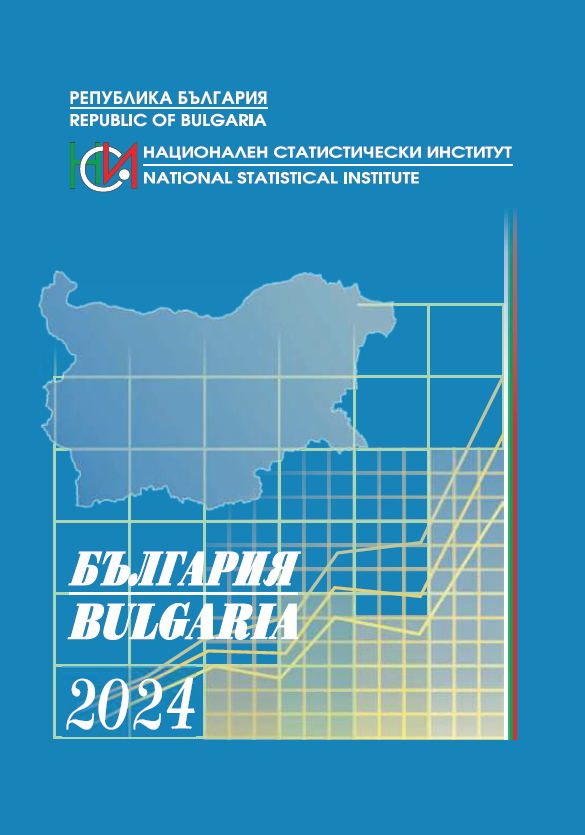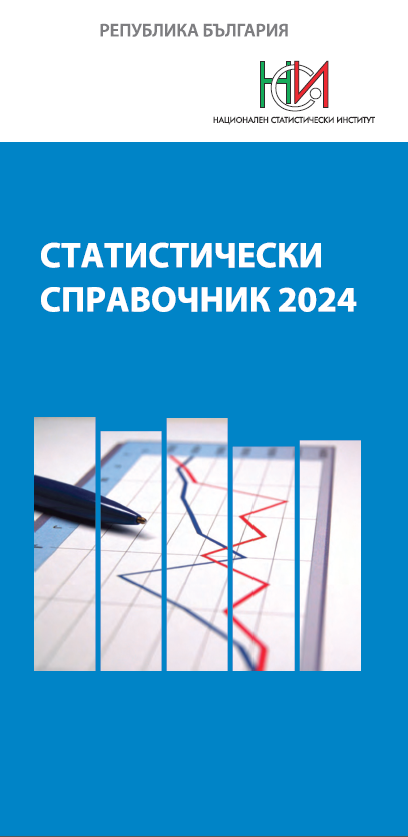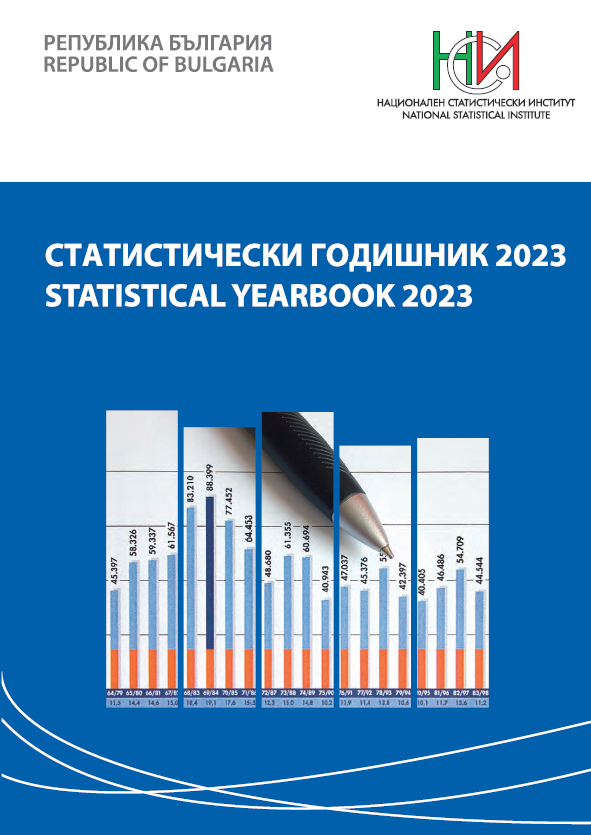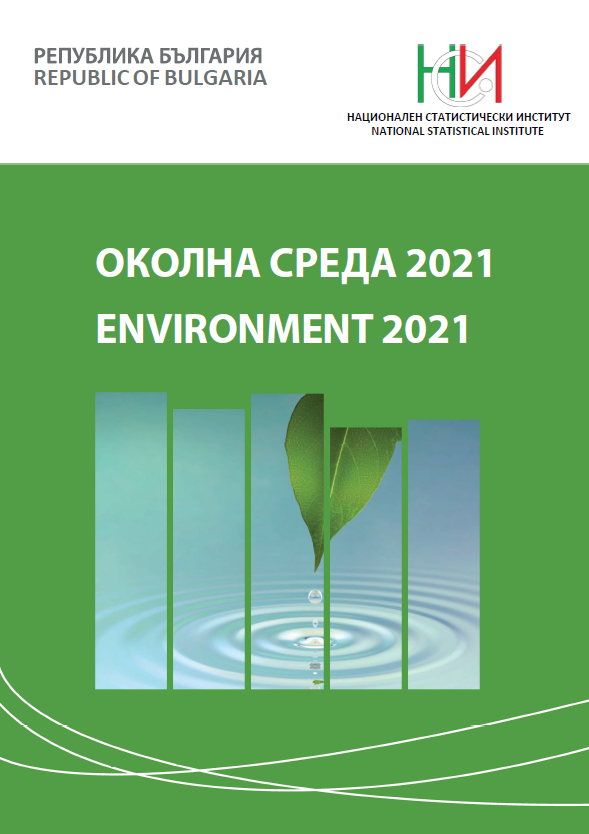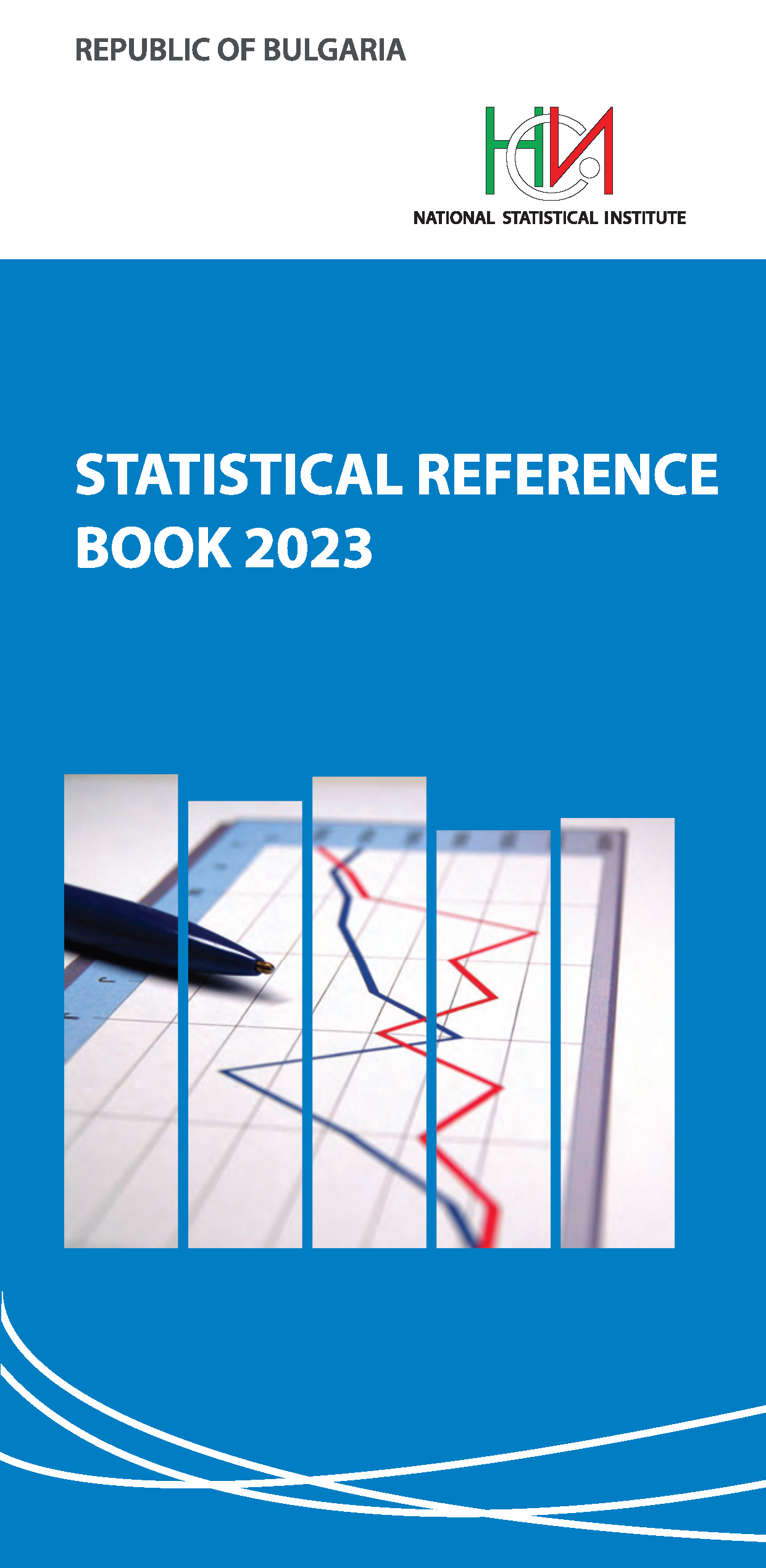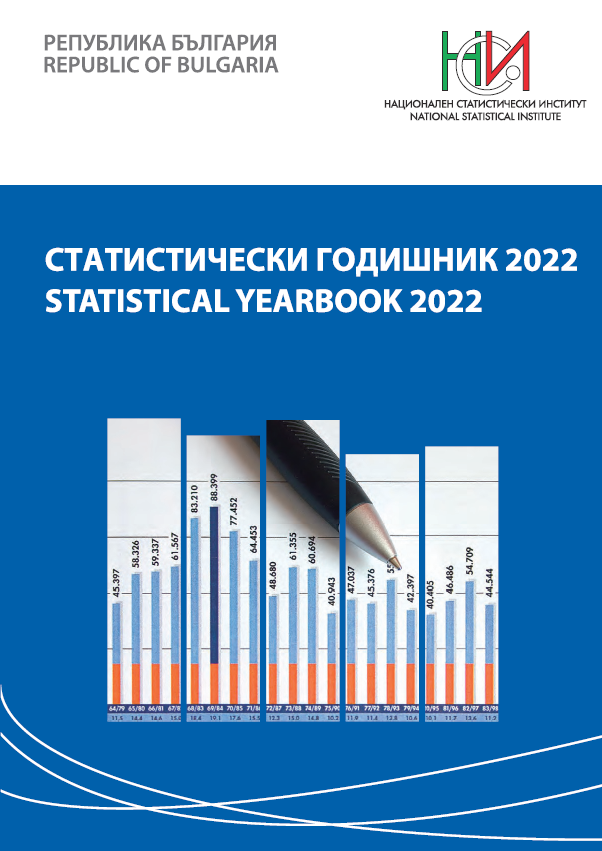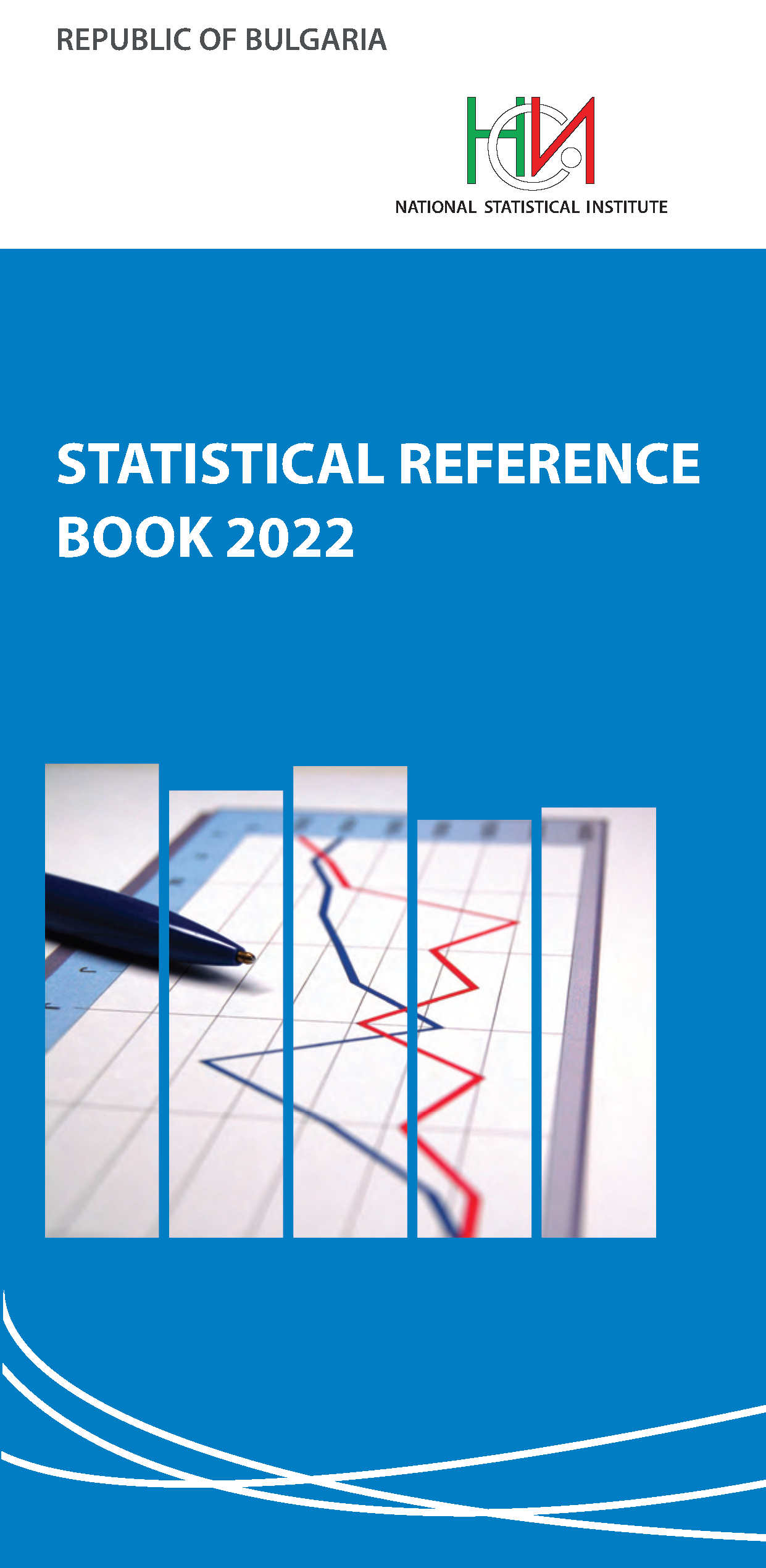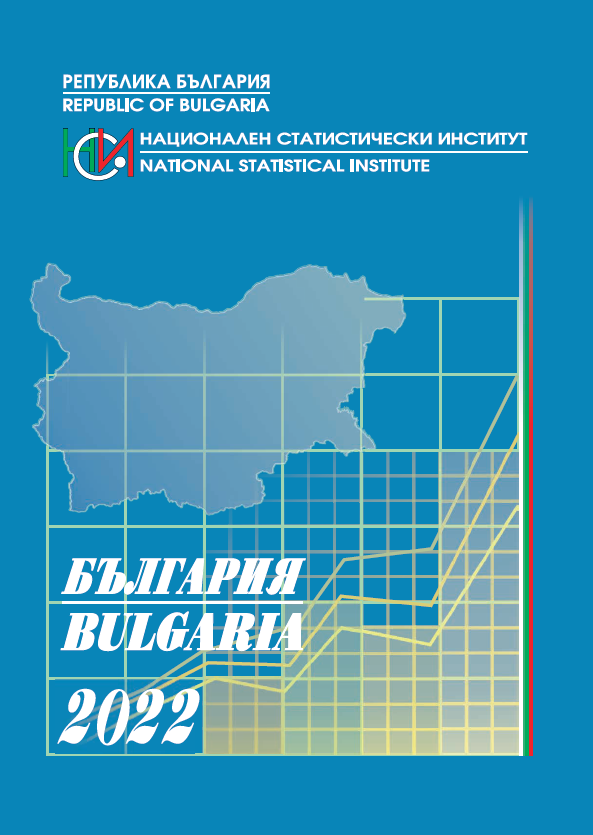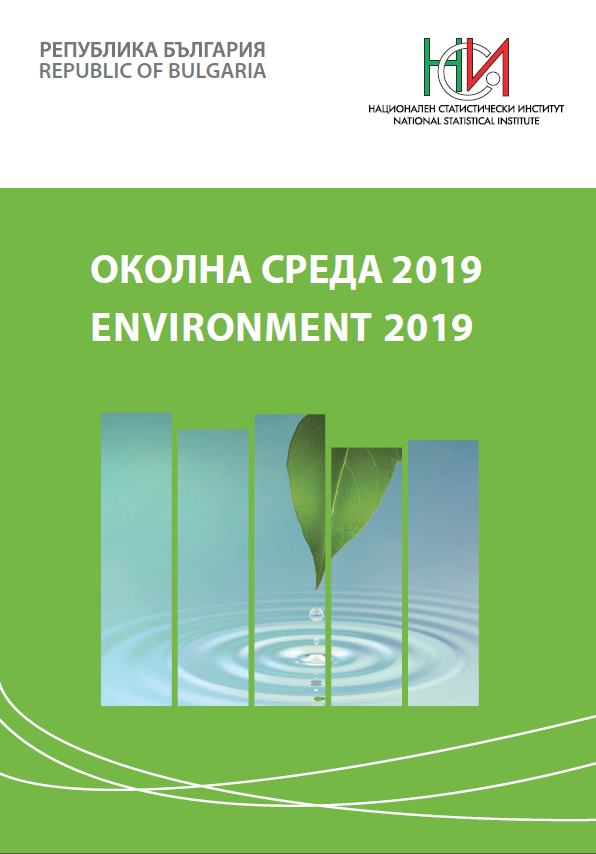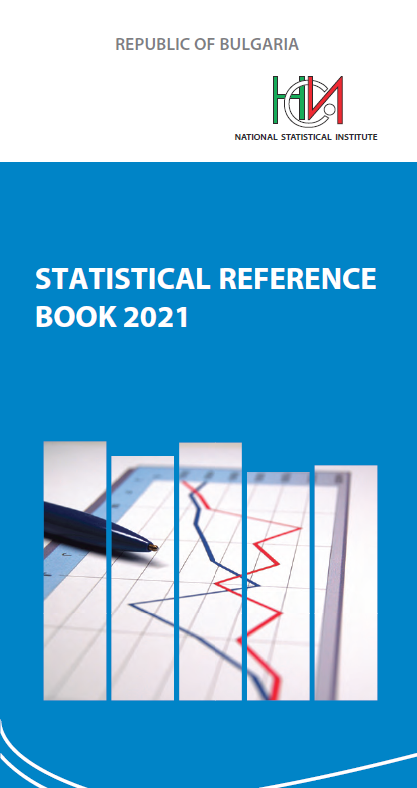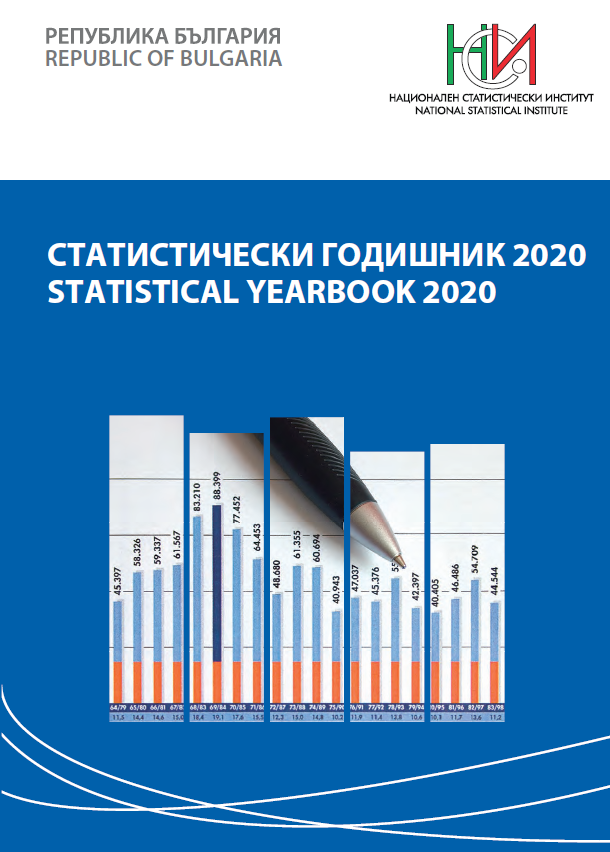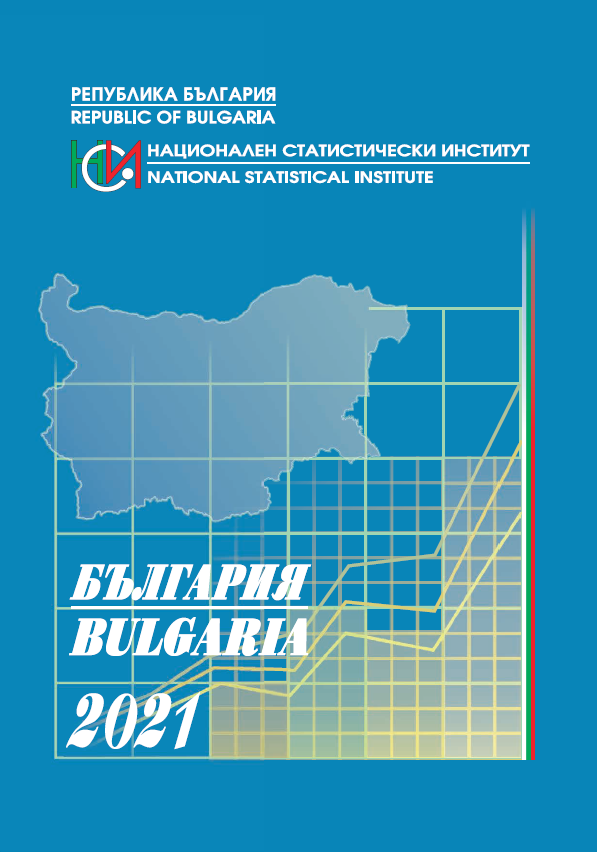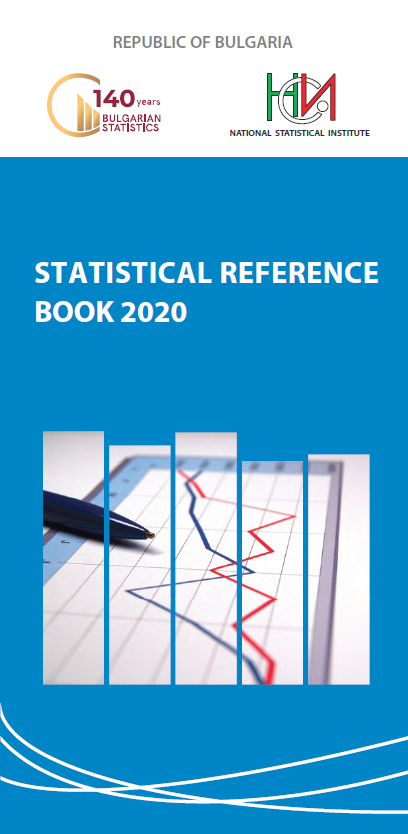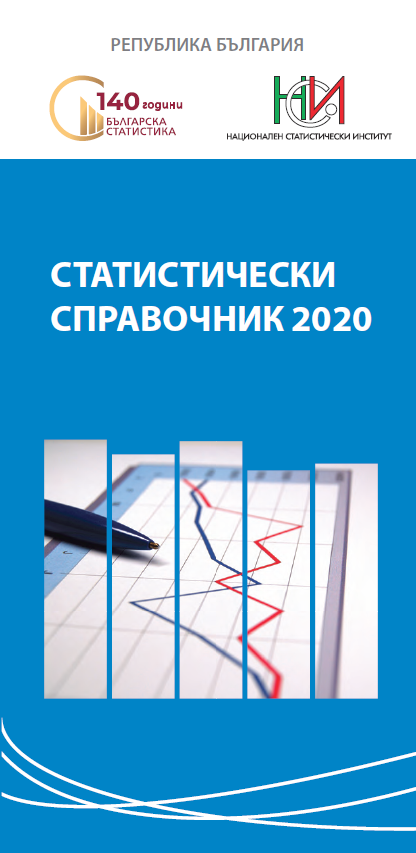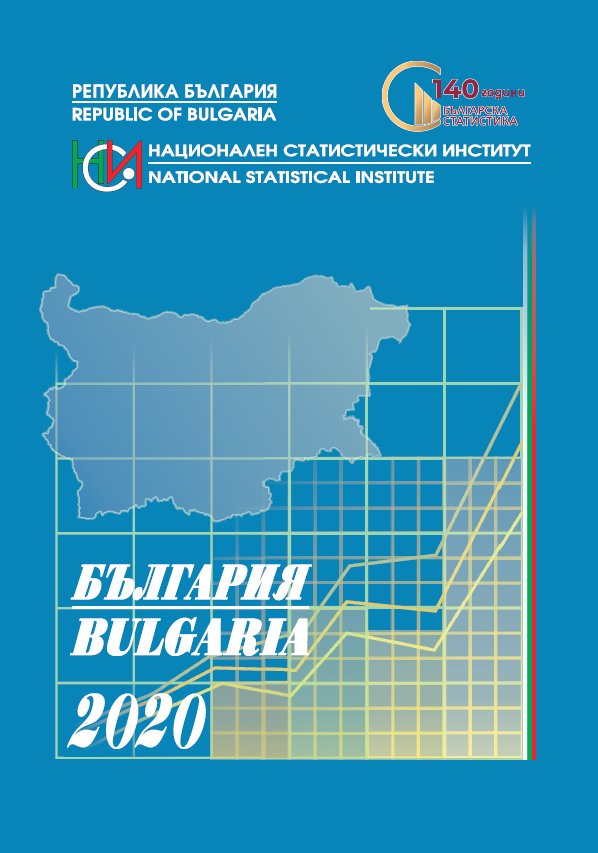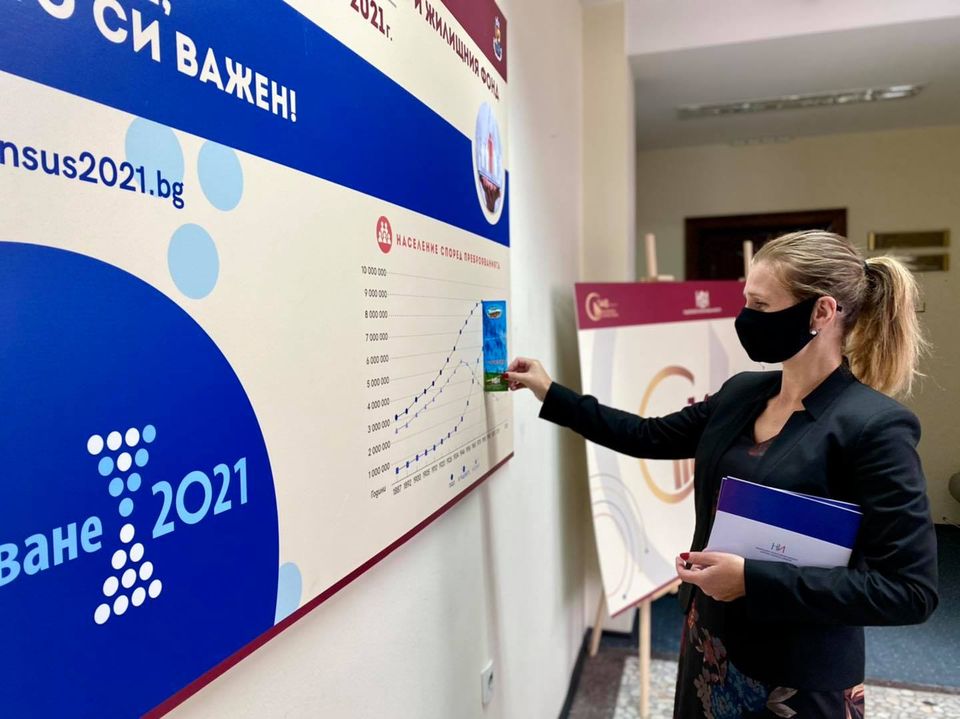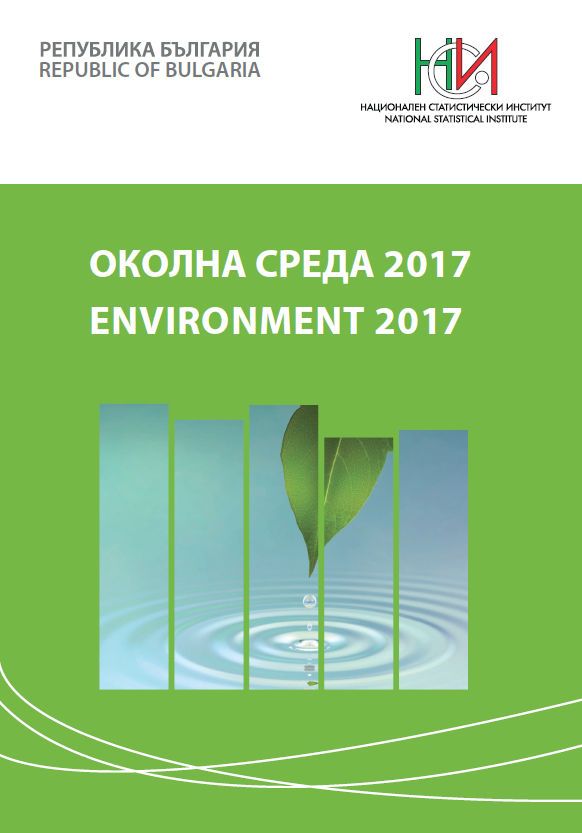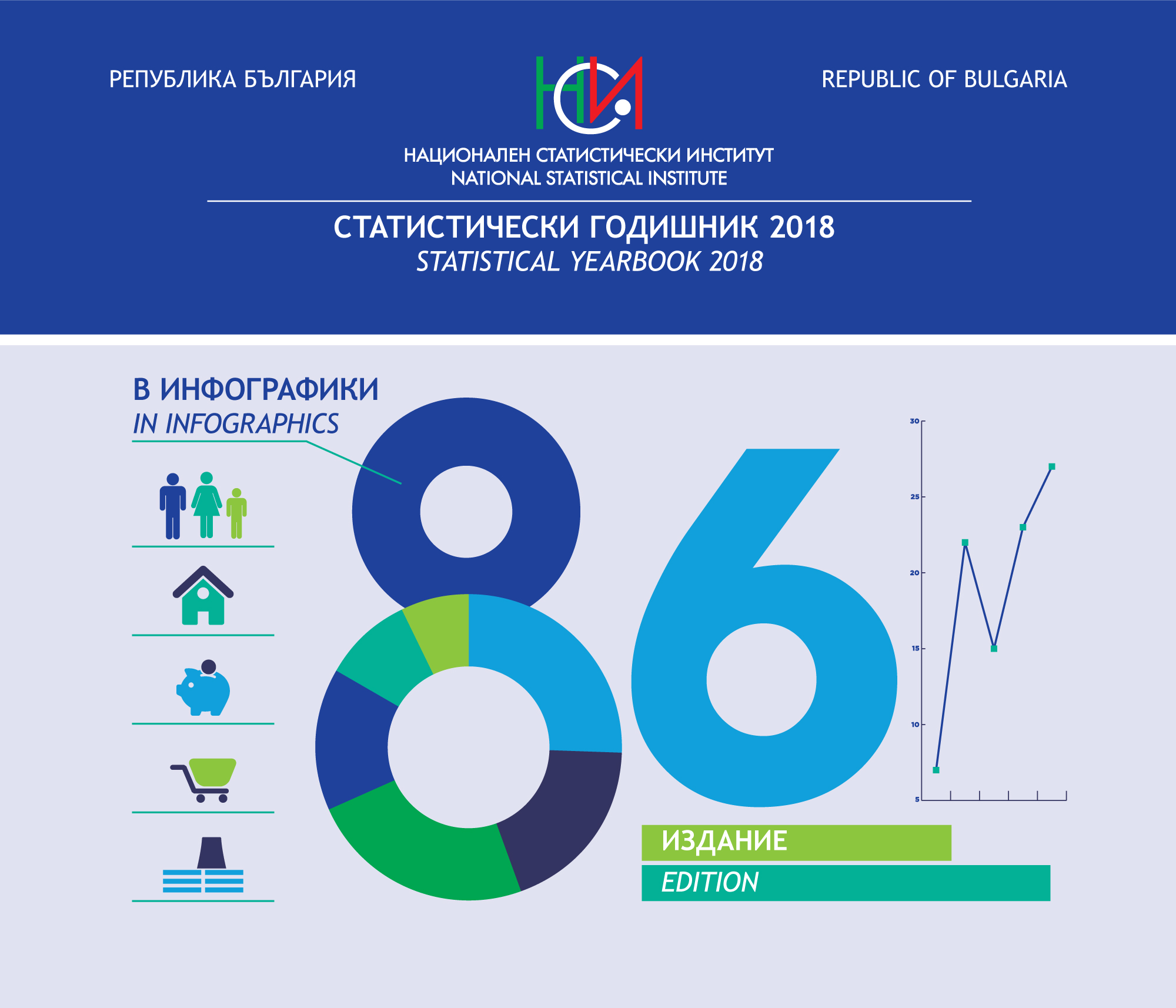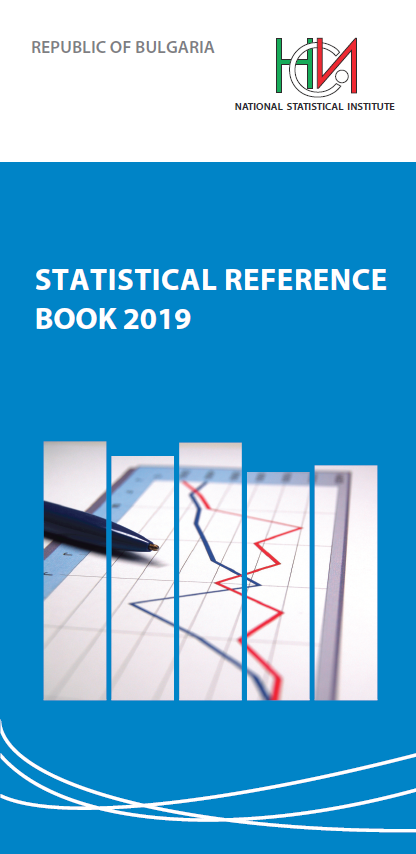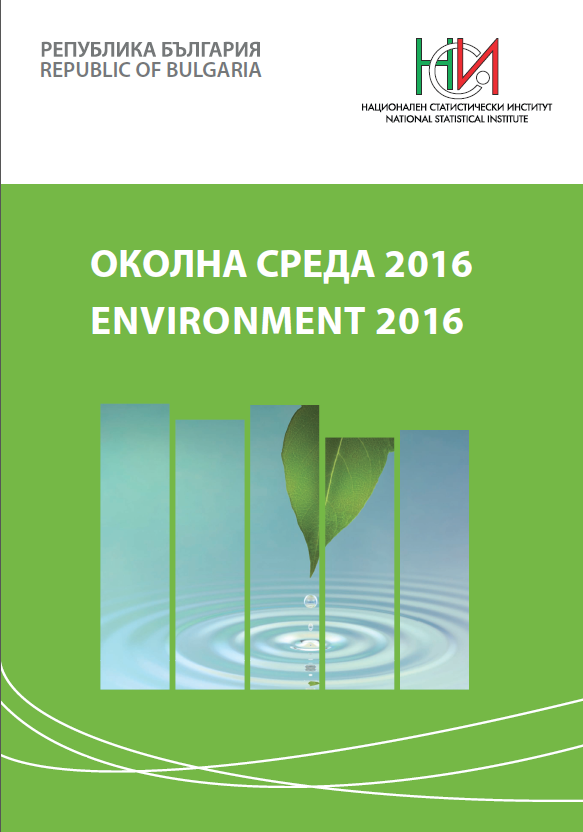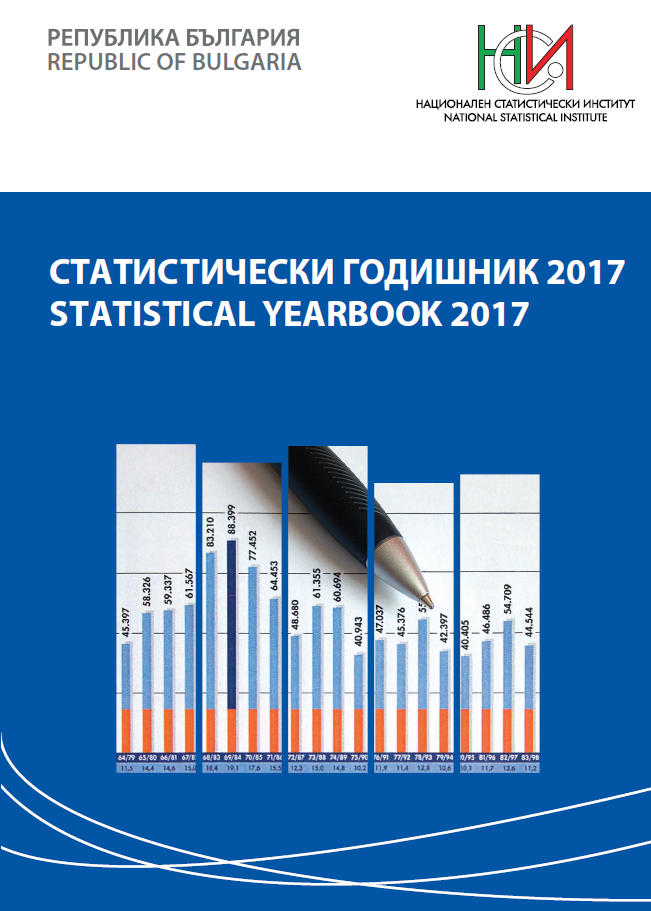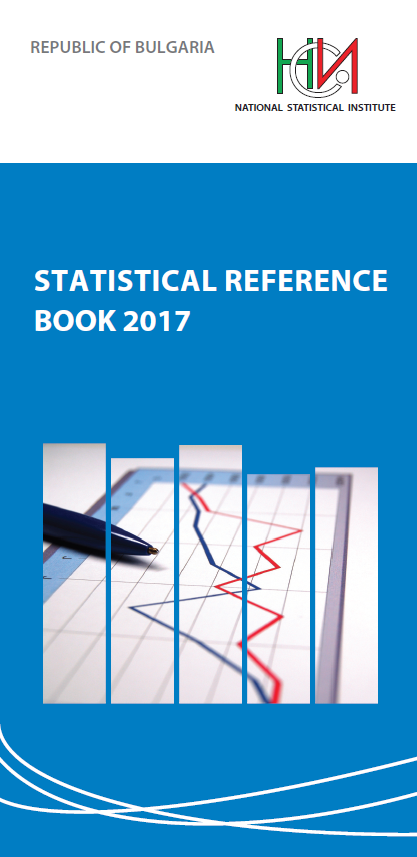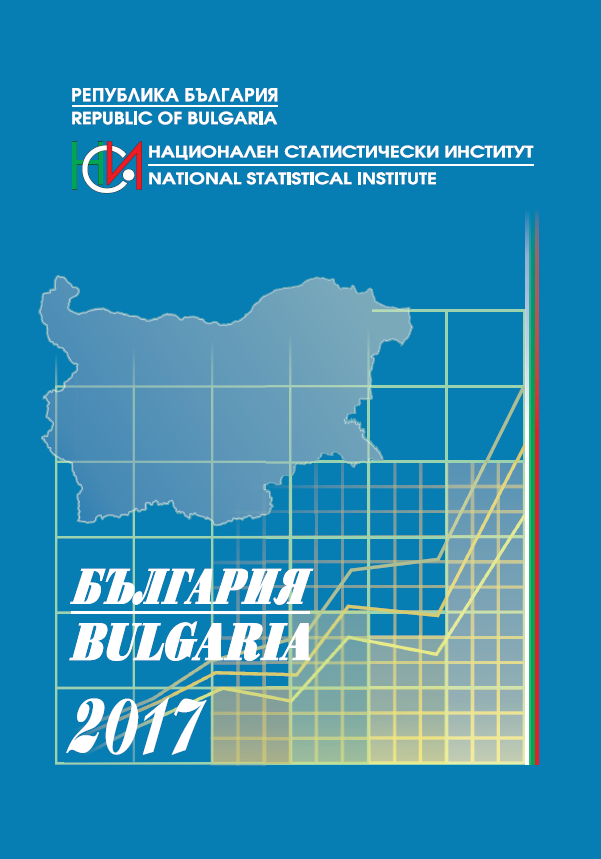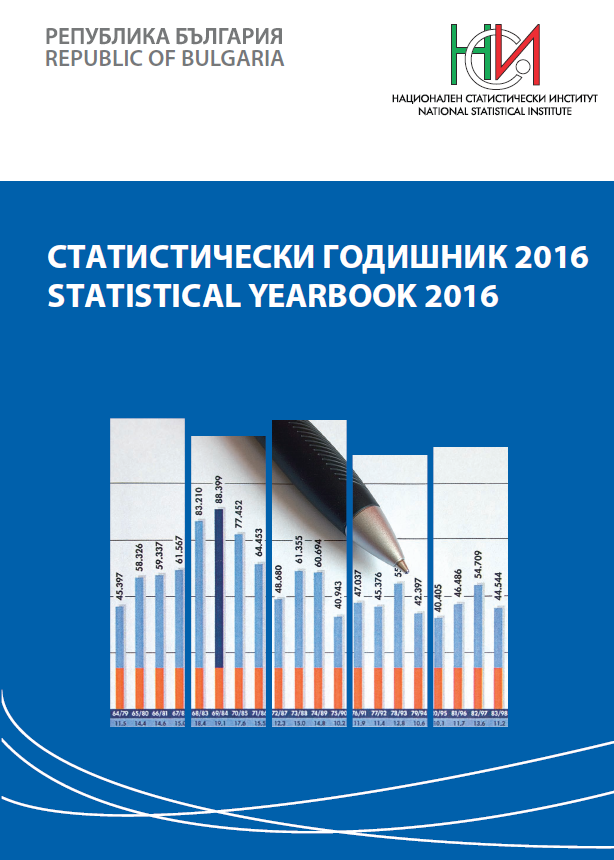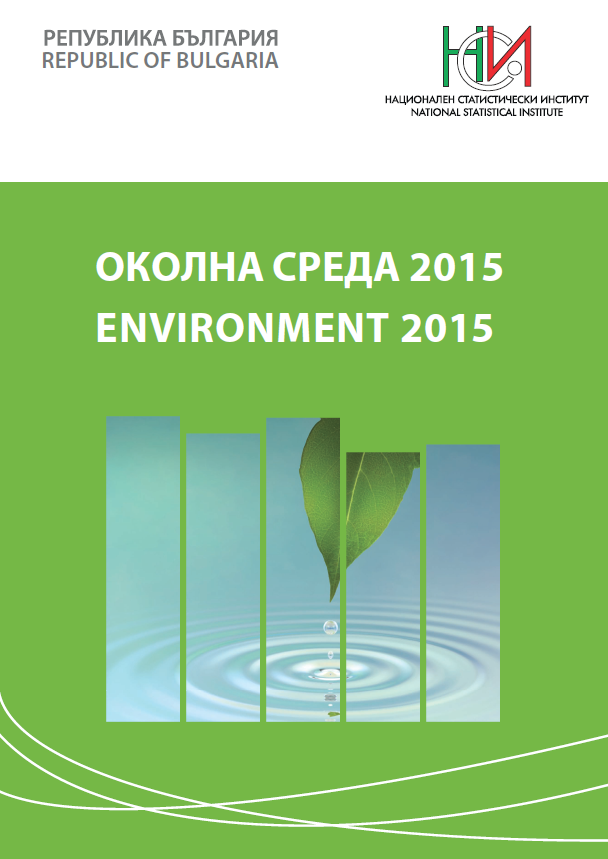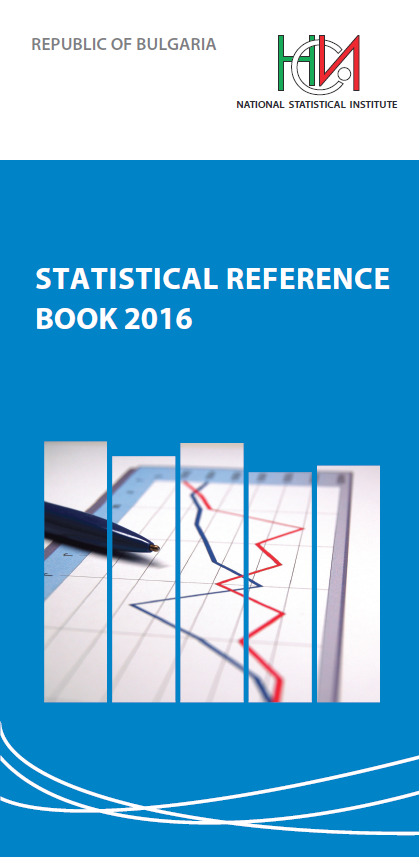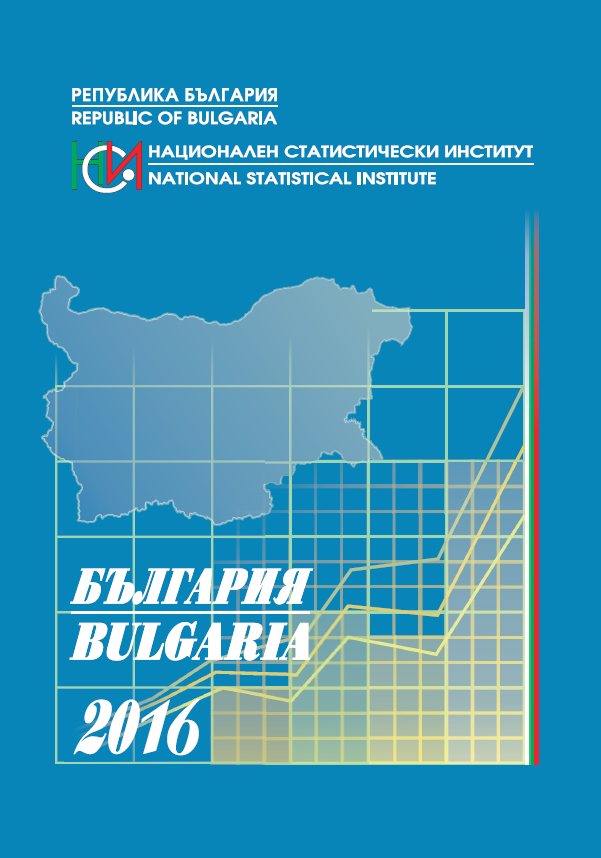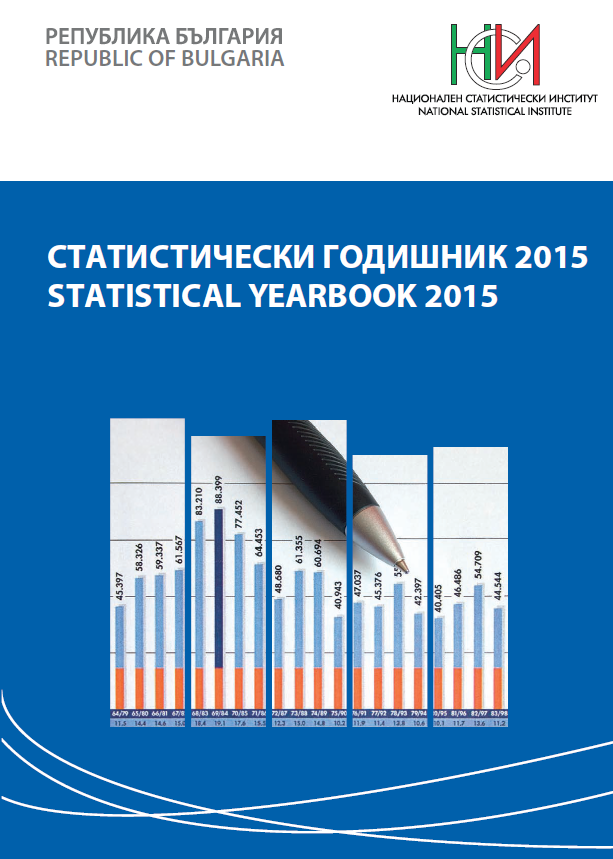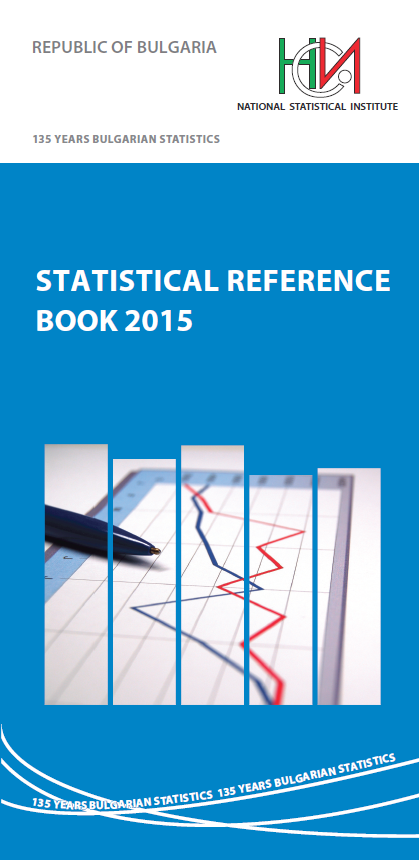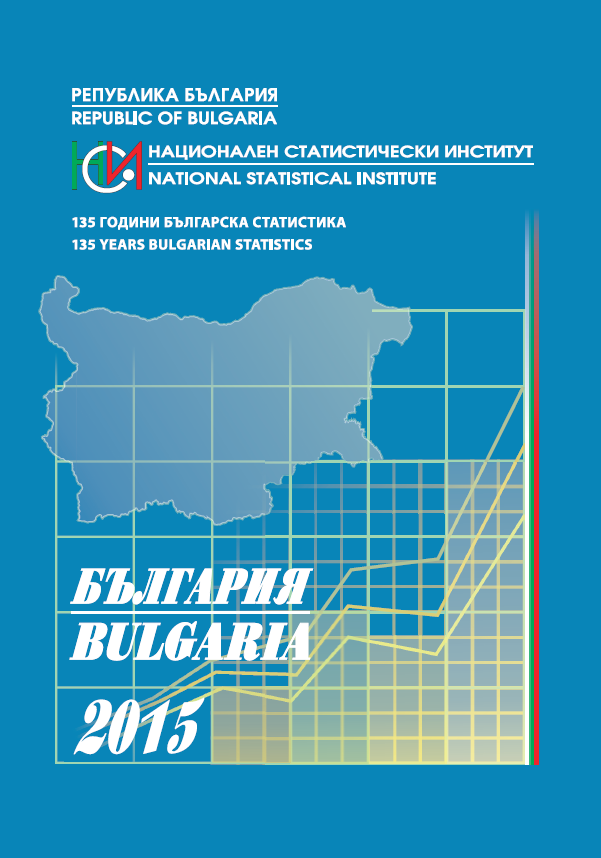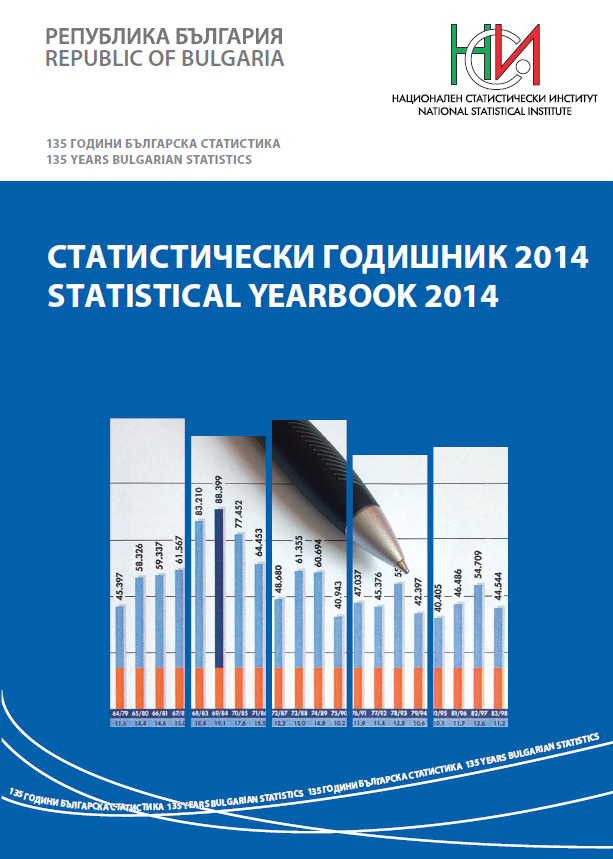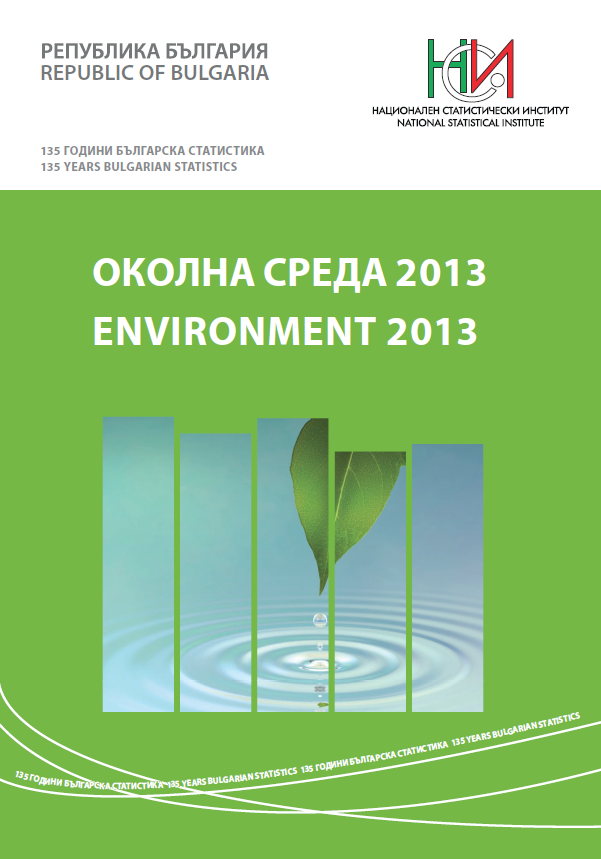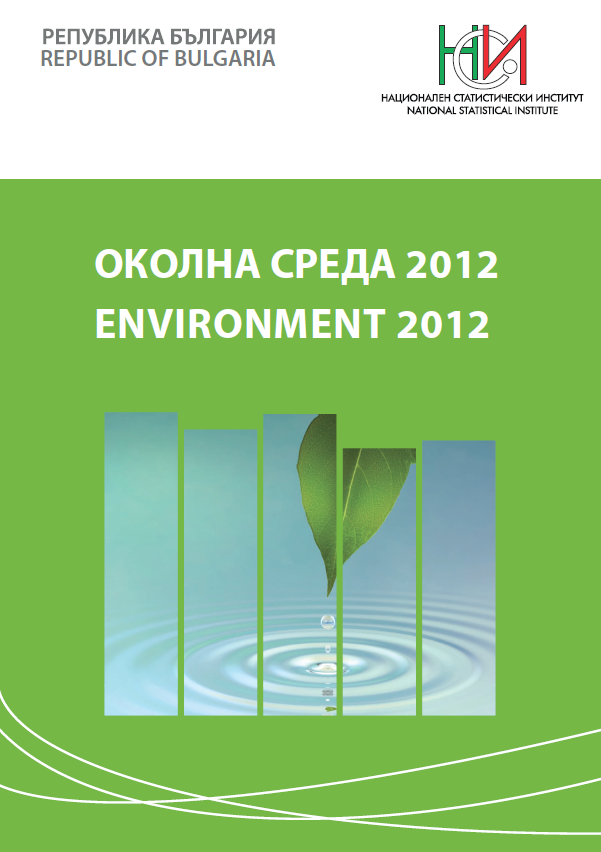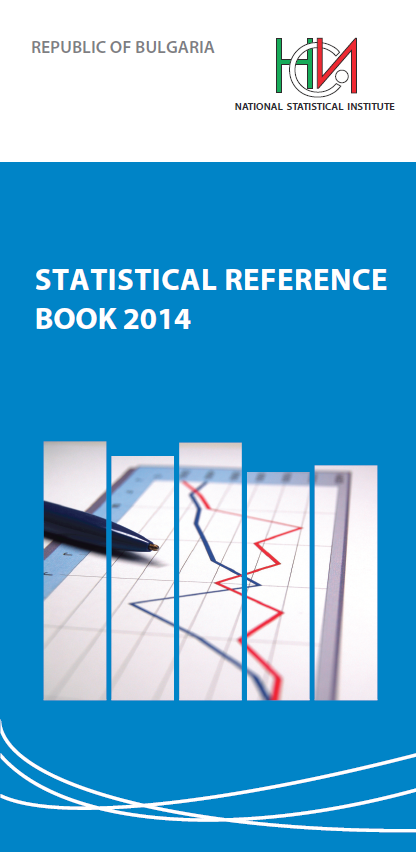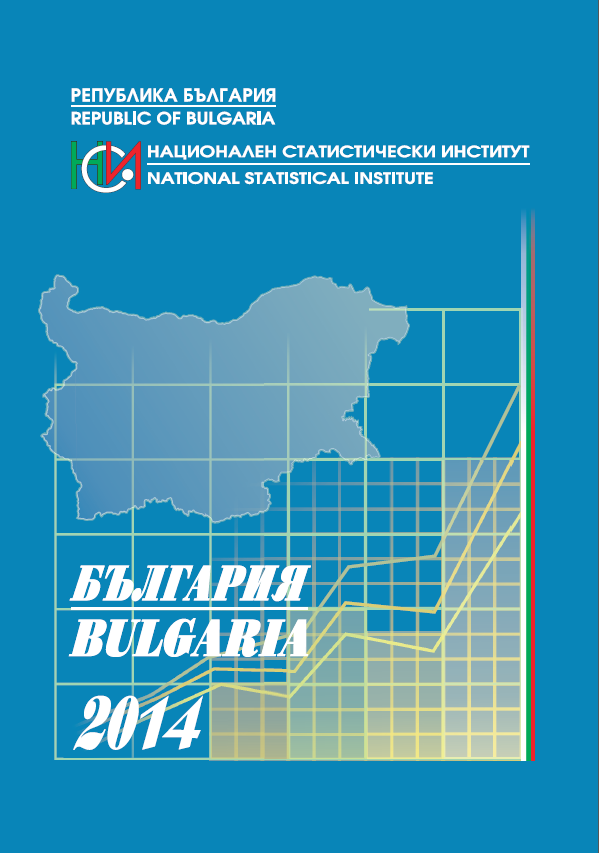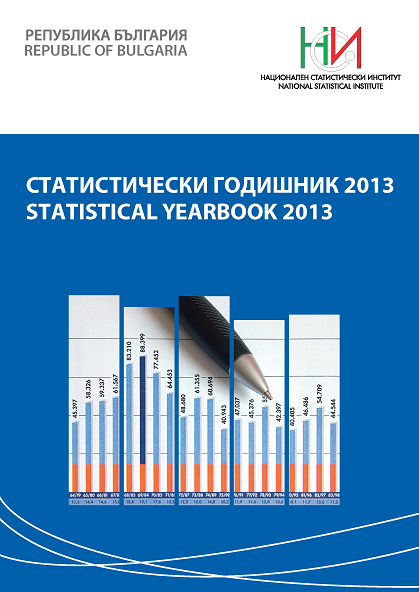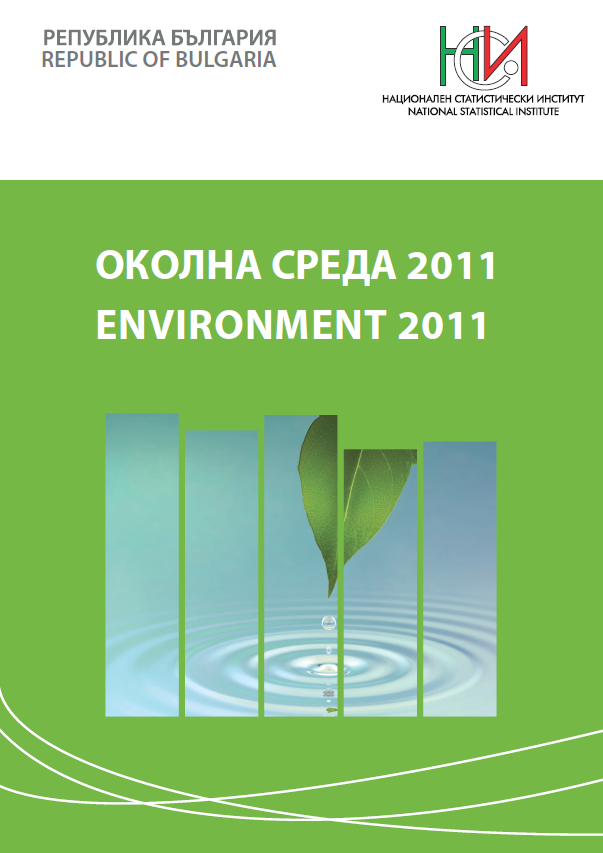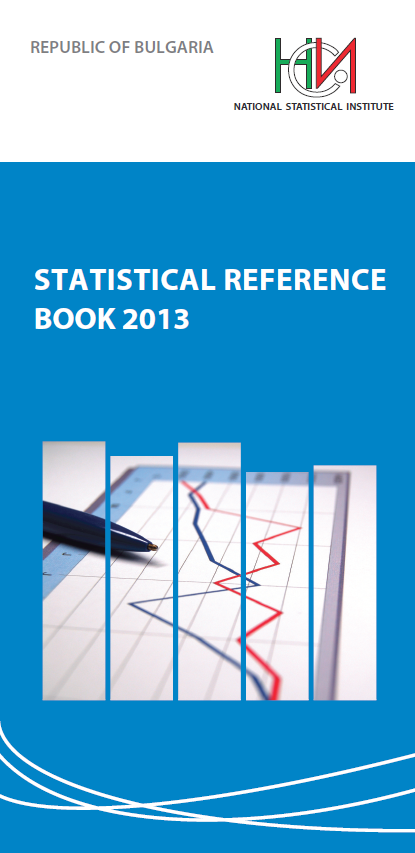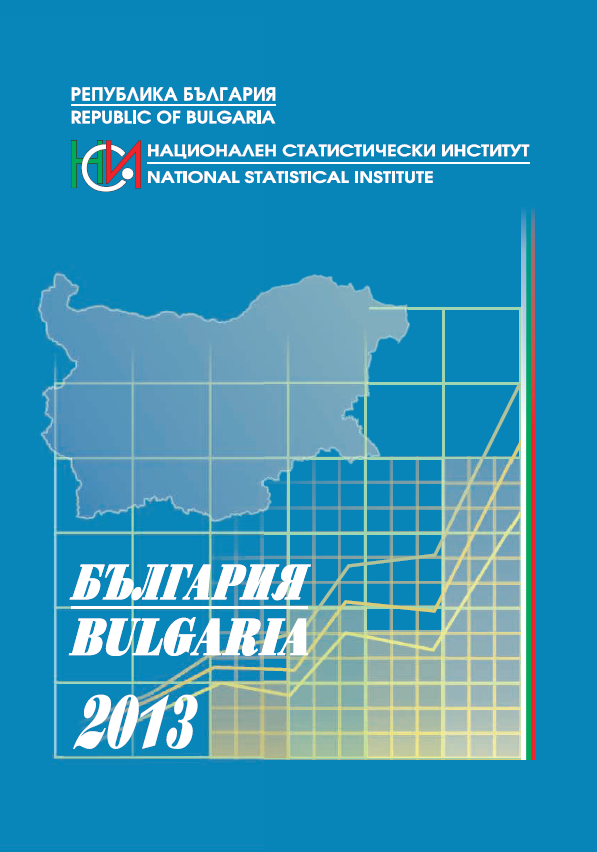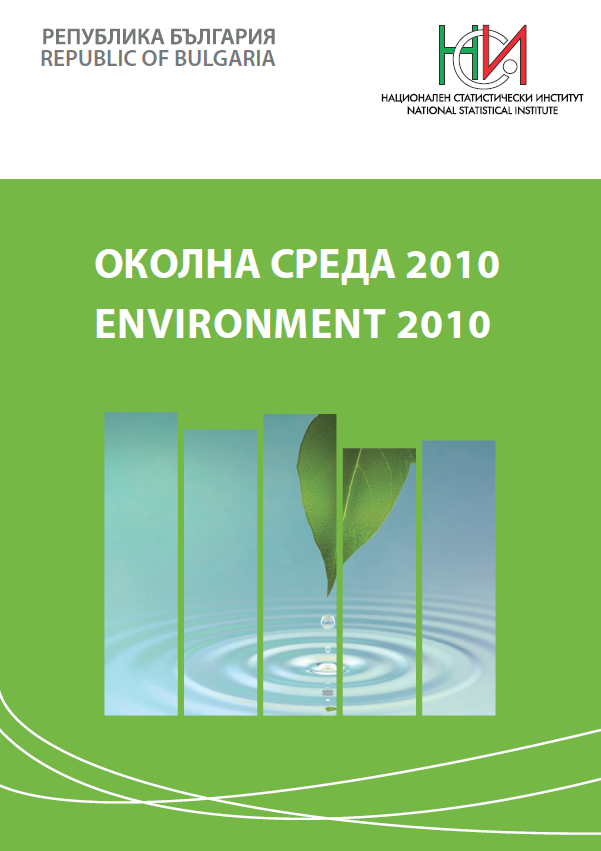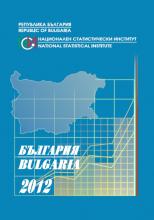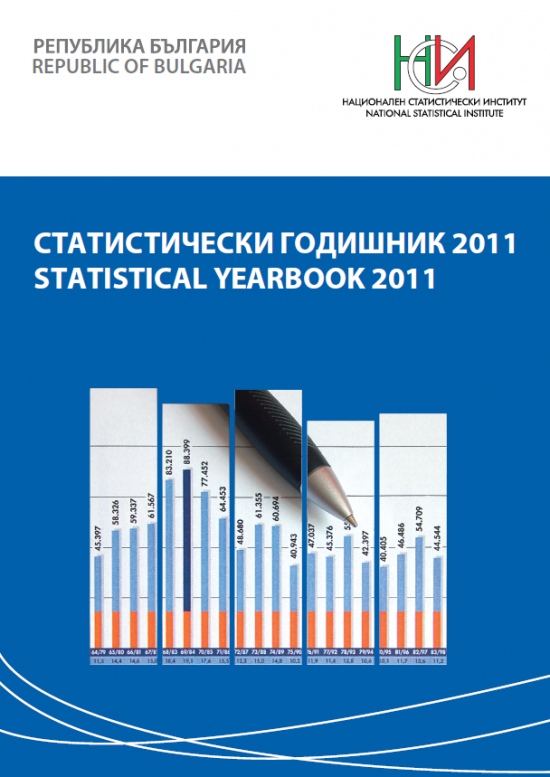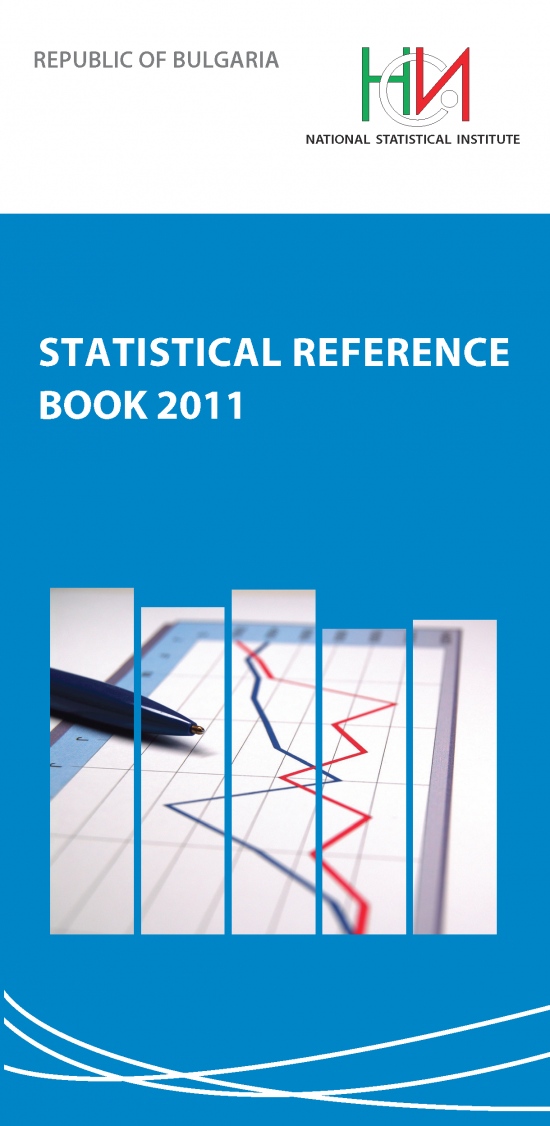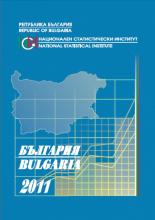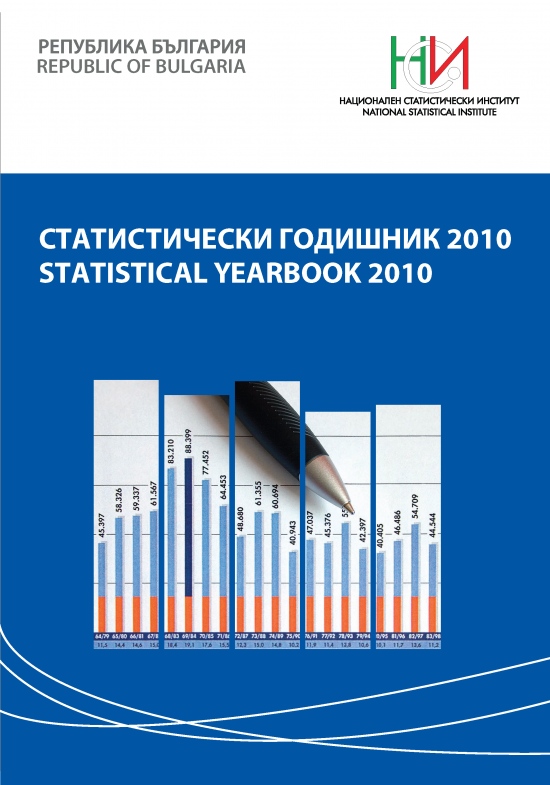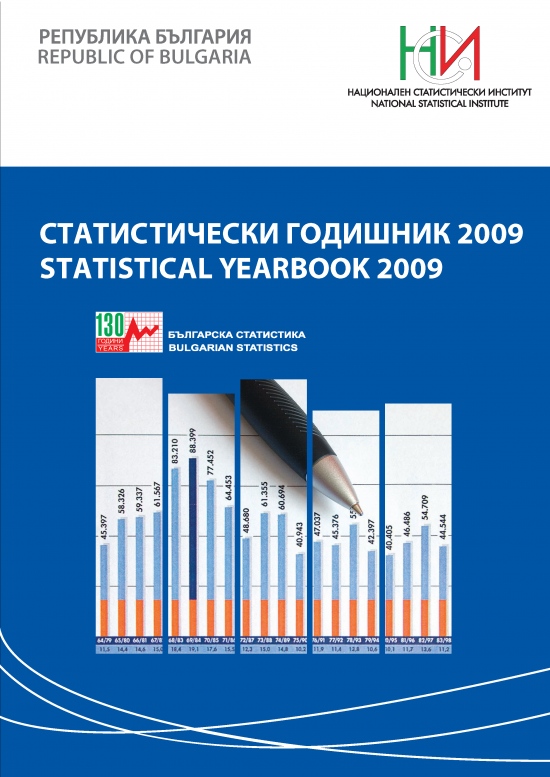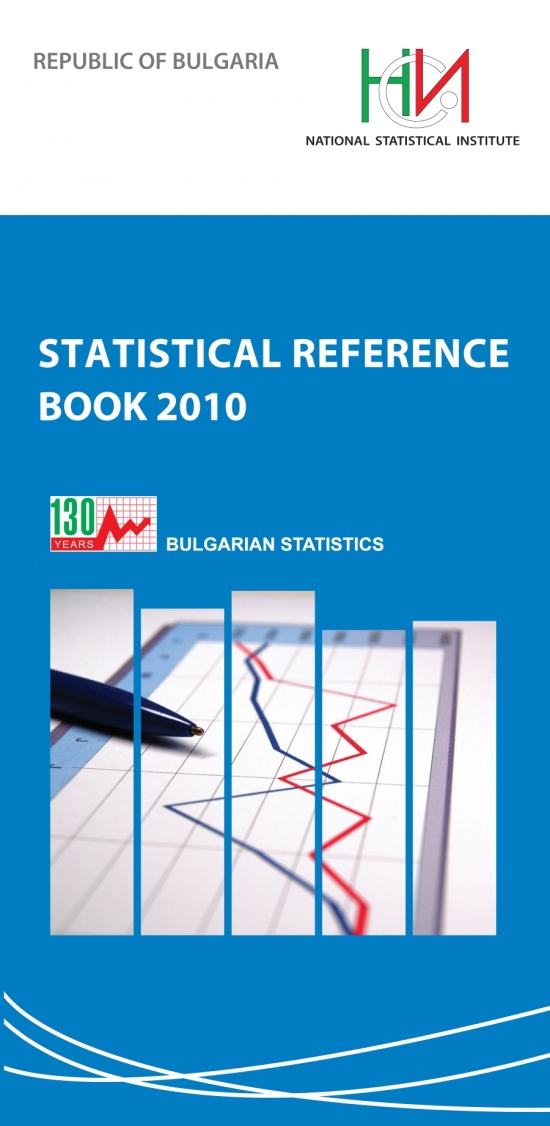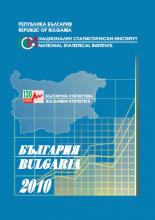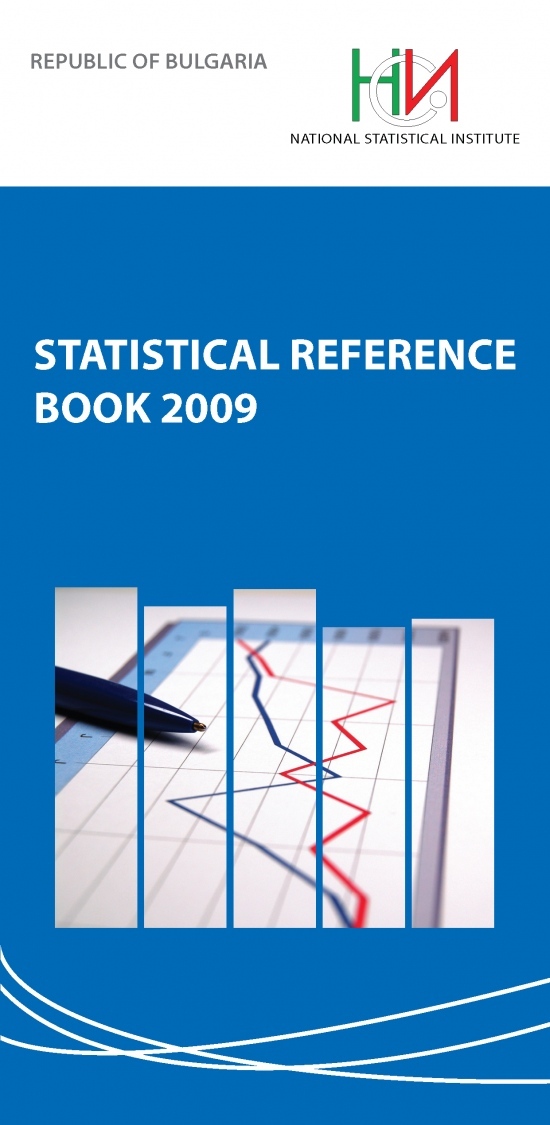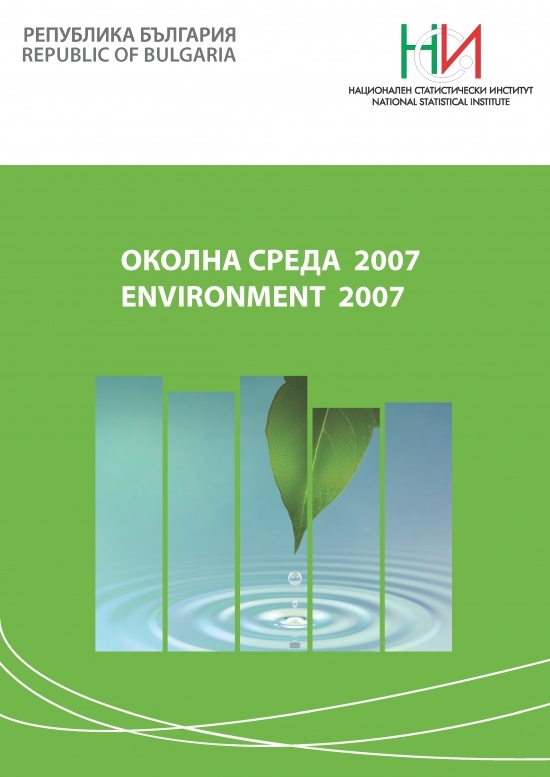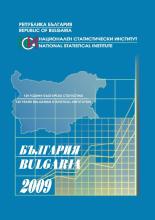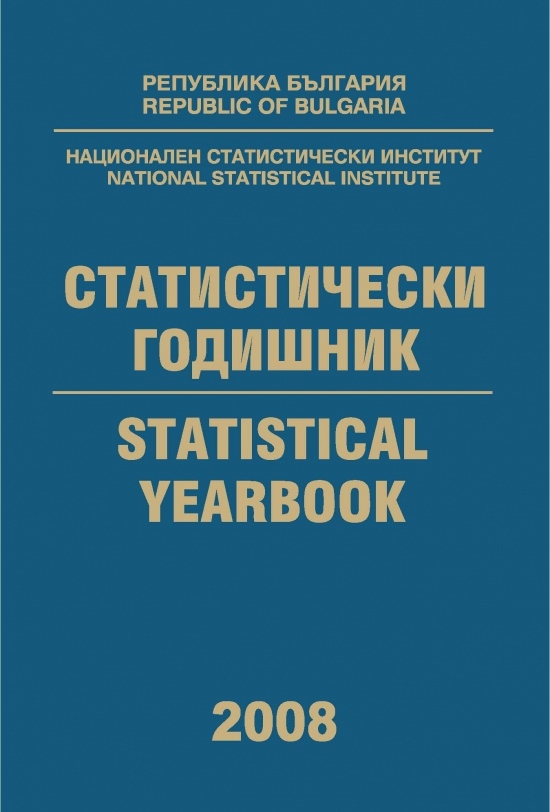Environmental taxes
| Contact | |
|---|---|
| Contact organisation | National Statistical Institute |
| Contact organisation unit | "Environmental and Energy Accounts" Department |
| Contact name | Ivaylo Boykov Rangelov |
| Contact person function | State expert |
| Contact mail address | 2 P.Volov street, 1038 Sofia |
| Contact email address | |
| Contact phone number | +359 2 9857 642 |
| Contact fax number | |
| Metadata update | |
| Metadata last certified | 21 December 2020 |
| Metadata last posted | 21 December 2020 |
| Metadata last update | 14 February 2022 |
| Statistical presentation | |
| Data description | Provision of information from firms, firm establishments, municipal administrations, scientific institutes, foundations, ministries and other organizations and departments which during the accounting year have paid for environmental taxes. This includes environmental taxes classified into categories: energy, transport, pollution and resource taxes. |
| Classification system | The following classifications are used to produce environmental tax data: • Classification of Economic Activities (NACE.BG-2008) as of 01.01.2008; • National tax list, as reported by National accounts in the table. 9 of the program for data transmission. |
| Sector coverage | Included are the economic subjects from all economic sectors, which during the accounting year have paid for environmental taxes |
| Statistical concepts and definitions | Environmental taxes have the same systemic boundaries as the SNA 2010 and consist of compulsory, unrequited payments in cash or in kind levied by the general government or by the institutions of the European Union. According to the SNA 2010, environmental taxes are a sub-category of indirect taxes and include: taxes on production and imports (D.2), current taxes on income, wealth, etc. (D.5) and capital taxes (D.9). An environmental tax is a tax whose tax base is a physical unit (or a proxy of a physical unit) of something that has a proven, specific negative impact on the environment, and which is identified in SNA as a tax. Types of environmental taxes - The main 4 categories of environmental taxes for which data is reported are: • Energy taxes: This category includes taxes on energy production and on energy products used for both transport and stationary purposes. The most important energy products for transport purposes are petrol and diesel. Energy products for stationary use include fuel oils, natural gas, coal and electricity. Carbon dioxide (CO2) taxes are also included under energy taxes. As a tax base for the emissions of CO2 are used the revenues from the Greenhouse gas emissions license (permits) fees under the Greenhouse emission trading system registered as taxes in national accounts. • Transport taxes: This category mainly includes taxes related to the ownership and use of motor vehicles, taxes on other transport equipment (e.g. planes, ships or railway stocks) and related transport services, road taxes. The transport taxes may be ‘one-off’ taxes related to imports or sales of the equipment or recurrent taxes such as an annual road tax. Taxes on petrol, diesel and other transport fuels are included under energy taxes. • Pollution taxes: Taxes on measured or estimated emissions to air and water, waste management and noise. • Resource taxes: Taxes on water extraction, hunting and fishing licenses, extraction of raw materials (e.g. sand and gravel) and other natural resources, commercial fishing. Value added type taxes (VAT), taxes on oil and gas extraction, fines and penalties for environmental pollution, donations are excluded from the definition of environmental taxes. Payments from consumers for provided certain environmental services by the state, such as wastewater treatment (discharge and treatment) and waste (household waste collection and disposal charge), are also excluded from the definition. |
| Statistical unit | Economic units that have paid environmental taxes. Data refer to environmentally related taxes collected by the government and payable by the different economic agents in a way that is fully compatible with the data reported under ESA 2010. |
| Statistical population | All economic units that have paid environmental taxes. The data are reported by the entities paying the taxes. The target population are all production sectors by NACE and as regard production refer to all the economic activities by NACE A * 64, on the basis of ESA 2010, households as consumers and non-resident units. |
| Reference area | Total for the country and by NACE Rev.2. / A11, sector households and non-residents |
| Time coverage | 2008 - 2019. |
| Base period | Not applicable. |
| Unit of measure | |
Million BGN | |
| Reference period | |
One calendar year, with first reference year the year when the Regulation 691/2011 was put into force. The final data refer to the mandatory reference years (2008-2019). | |
| Institutional mandate | |
| Legal acts and other agreements | The data collection on environmental taxes by economic activity is part of the EU Regulation N° 691/2011 on European environmental economic accounts of the European Parliament and of the Council of 6 July 2011. This Regulation provides a framework for the development of various types of environmental accounts. Environmental taxes by economic activity are included in Annex II of this Regulation. The national tax lists are collected by Eurostat as a complement of table 9 of the ESA 2010 (European system of accounts) transmission programme. National Accounts are compiled in accordance with the European System of Accounts (ESA 2010) adopted in the form of a Council Regulation dated 21 May 2013, No 549/2013 and published in the Official Journal L 174 of the 26/06/2013. A consolidated version is available on http://eur-lex.europa.eu/legal-content/EN/TXT/PDF/?uri=CELEX:32013R0549&from=EN The legal basis for the "Main national accounts tax aggregates" domain is Table 0900 "Detailed tax and social contribution receipts by type of tax and social contribution and receiving subsector" of the ESA 2010 transmission programme - Annex B of Council Regulation (EU) N° 549/2013 of the European Parliament and of the Council of 21 May 2013. |
| Data sharing | Regular Questionnaire/ Eurostat – Environmental taxes by economic activity. Eurostat collects data on environmental tax revenues through an annual questionnaire on Environmental taxes by economic activity. The final data refer to compulsory unrequited payments, which are levied by general government or by the institutions of the Union. Environmental taxes revenues are listed in the National Tax List (NTL). Environmental taxes, as part of the General government tax revenues, are included in Table 0900 Taxes and social contributions by type and sub-sectors of General Government and National Tax List NTL - Detailed list of taxes and social contributions according to national classification. The variables are presented according to the European System of Accounts (ESA 2010) classifications and the transmission program for submission and include detailed tax descriptions. Full coherence of environmental tax data by economic activity and total tax revenue is provided on the basis of the National Tax List. |
| Confidentiality | |
| Confidentiality - policy | Law on Statistics Regulation (EC) No 223/2009 on European statistics (recital 24 and Article 20(4)) of 11 March 2009 (OJ L 87, p. 164), stipulates the need to establish common principles and guidelines ensuring the confidentiality of data used for the production of European statistics and the access to those confidential data with due account for technical developments and the requirements of users in a democratic society: http://eur-lex.europa.eu/LexUriServ/LexUriServ.do?uri=OJ:L:2009:087:0164:0173:EN:PDF |
| Confidentiality - data treatment | Individual data are not published in accordance with article 25 of the Law on Statistics. The publishing of individual data can be performed only in accordance with article 26 of the same law. |
| Release policy | |
| Release calendar | The date of release of statistical information is indicated in the Release Calendar presenting the results of the statistical surveys carried out by the National Statistical Institute. |
| Release calendar access | The calendar is available on the NSI website: https://www.nsi.bg/en/node/480 |
| User access | Data on environmental taxes is published on the NSI website, section ‘Environment’ in accordance with the Law on Statistics and the European Statistics Code of Practice respecting the professional independence and aimed at objectivity, transparency and equal treatment of all consumers. |
| Frequency of dissemination | |
Annual | |
| Accessibility and clarity | |
| News release |
|
| Publications | All publications are prepared in a timely manner, according to the Release Calendar presenting the results of the statistical surveys carried out by the National Statistical Institute. Data on the revenues from paid environmental taxes is published in: • Electronic publication "Environment"; • International Publications - Eurostat Electronic Publication "Energy, Transport and Environment Indicators" - Chapter 4, Point 4.9 - Environmental Taxes; - Key figures on Europe • Statistics Explained articles Eurostat - Environmental tax statistics (planned article update January 2018) - Environmental taxes - detailed analysis (planned article update February 2018) - Tax_revenue_statistics – this article contains all national tax lists (validated and published by Eurostat) |
| On-line database | Data on environmental taxes covering the mandatory reference period are available to all users of the NSI website under the heading ‘Environment’: https://www.nsi.bg/en/node/13749 and INFOSTAT - Information System for online requests for statistical information: https://infostat.nsi.bg/infostat/pages/module.jsf?x_2=307 National data on paid environmental taxes are also available on the Eurostat web site at under the heading Environment and Energy – Environment – Environmental taxes - Environmental tax revenues (env_ac_tax). |
| Micro-data access | Anonymised individual data can be provided for scientific and research purposes, and upon individual request according to the Rules for the provision of anonymised individual data for scientific and research purposes.treatment of all consumers. |
| Other | Information service upon request, according to the Rules for the dissemination of statistical products and services in NSI. |
| Documentation on methodology | The reference compilation manual is: Environmental taxes - A statistical guide, 2013 edition. The methodological framework is the European system of accounts, 2010 edition (ESA 2010). The "Manual of Government Deficit and Debt Implementation of ESA 2010" contains also Eurostat decisions on recording of taxes and social contributions |
| Quality documentation | According to European Statistics Code of Practice and common framework for quality management in the National Statistical System. Also in the quality report to be sent along with the Eurostat questionnaire for environmental taxes describes the methodology used to collect and process the statistical data. The following criteria for assessing the quality of information are used: relevance, accessibility, accuracy, timeliness and punctuality, clarity, consistency and comparability. Due to the unity of principles, variables, definitions and classifications used there is a high degree of comparability between EU Member States with regard to the survey’s results. Time series are available beginning 2008. Comparability – geographical and over time The data are fully comparable among EU Member States. Geographical comparability is also enhanced due to the relevant Manual of Eurostat on Environmetal taxes and the relevant validation checks conducted by Eurostat. However, since in each Member State several sources are used for the compilation of statistics, there may be differences in range and quality. The data are comparable over time. Coherence – sub annual and annual statistics The results are compiled only on an annual basis. Coherence – National Accounts The tabulated data are fully coherent with the corresponding data for the environmental taxes revenues complied by National Accounts. |
| Quality management | |
| Quality assurance | European Statistics Code of Practice; A common framework for quality management in the National Statistical System. |
| Quality assessment | In the quality report to be sent along with the Eurostat questionnaire for environmental taxes describes the methodology used to collect and process the statistical data. The following criteria for assessing the quality of information are used: relevance, accessibility, accuracy, timeliness and punctuality, clarity, consistency and comparability |
| Relevance | |
| User needs | Main users of survey’s statistical information are the state and municipal entities, associations, companies and citizens. |
| User satisfaction | The Statistical Information Dissemination Section of NSI conducts a survey of user satisfaction with the offered statistical data products and services. The survey and the results summary are available at the following link:https://www.nsi.bg/en/node/16537 The statistics of the NSI website visit shows that: In 2017, total access to the website – section environmental taxes amounted to 120 hits. In 2018, total access to the website – section environmental taxes amounted to 159 hits. |
| Completeness | NSI, meets the requirements of European Regulation 691/2011, regularly reporting mandatory data on the module on environmental taxes, according to the methodological guidelines of Eurostat. |
| Accuracy and reliability | |
| Overall accuracy | The overall accuracy of data is good and disseminated data are reliable. |
| Sampling error | There are no sampling errors. Not applied. |
| Non-sampling error | No non-sampling error. |
| Timeliness and punctuality | |
| Timeliness | The data is published according to the terms laid down in the Release Calendar presenting the results of the statistical surveys carried out by the National Statistical Institute. |
| Punctuality | All publications are prepared timely, according to the Release Calendar presenting the results of the statistical surveys carried out by the National Statistical Institute. Environmental taxes data and metadata report are transmitted within the deadlines set out by Eurostat |
| Coherence and comparability | |
| Comparability - geographical | Due to the unity of principles, variables, definitions and classifications used there is a high degree of comparability between EU Member States with regard to the survey’s results. The data are fully comparable among EU Member States. Geographical comparability is also enhanced due to the relevant Manual of Eurostat and the relevant checks conducted by Eurostat. |
| Comparability - over time | Time series are available beginning 2008. The data are totally comparable over time due to the application of the same methodology for all covered years. |
| Coherence - cross domain | Due to the unity of principles, variables, definitions and classifications used there is a high degree of coherence with National Accounts and Environmental Accounts. |
| Coherence - internal | The data reported are internally coherent (totals are equal to the sum of the breakdowns). |
| Cost and burden | |
There is no burden for respondents in terms of data collection and data processing. The administrative cost of NSI for conducting annual survey on taxes and fees is described in National Statistical Programme for the calendar year available on the site of NSI on the following link: https://www.nsi.bg/bg/node/2 | |
| Data revision | |
| Data revision - policy | Revision of the data is applied if necessary. |
| Data revision - practice | Revision of the data is applied if necessary. |
| Statistical processing | |
| Source data | The data which are used for the compilation of environmental taxes statistics derive from: National Accounts – Financial Statistics Section of the National Accounts Division responsible for elaboration of annual data for taxes and social contributions by sub-sectors of General Government and reporting table 9 of the ESA transmission programme (NTL). The main data source used is the national tax list (NTL) which is transmitted every year to Eurostat as a complement of table 9 of the ESA 2010 transmission programme containing total environmental taxes revenues by tax category. Environmental taxes are selected from the NTL on the basis of their environmental code (E, T, P, RS). National Accounts – Non-financial national and regional accounts of the National Accounts Division for annual National Accounts Supply and Use Tables (SUT) Annual statistical survey for paid taxes and fees which is part of the Annual activity reports containing the accounting and statistical surveys entered, edited and processed in the Information System Business Statistics (ISBS). |
| Frequency of data collection | Data are collected on a yearly basis. |
| Data collection | The main source of data is a statistical questionnaire on environmental taxes. The questionnaire is in on-line electronic format. |
| Data validation | Data comparing with those reported in the previous year as regards incorrect measure units and incorrect data - by kind of taxes. |
| Data compilation | Dataset containing all resident units. |
| Adjustment | Not applicable. |
| Comment | |
ESS Standard for Quality Reports Structure (ESQRS)
| Contact | |
|---|---|
| Contact organisation | National Statistical Institute |
| Contact organisation unit | "Environmental and Energy Accounts" Department |
| Contact name | Ivaylo Boykov Rangelov |
| Contact person function | State expert |
| Contact mail address | 2 P.Volov street, 1038 Sofia |
| Contact email address | |
| Contact phone number | +359 2 9857 642 |
| Contact fax number | |
| Statistical presentation | |
| Data description | Provision of information from firms, firm establishments, municipal administrations, scientific institutes, foundations, ministries and other organizations and departments which during the accounting year have paid for environmental taxes. This includes environmental taxes classified into categories: energy, transport, pollution and resource taxes. |
| Classification system | The following classifications are used to produce environmental tax data: • Classification of Economic Activities (NACE.BG-2008) as of 01.01.2008; • National tax list, as reported by National accounts in the table. 9 of the program for data transmission. |
| Sector coverage | Included are the economic subjects from all economic sectors, which during the accounting year have paid for environmental taxes |
| Statistical concepts and definitions | Environmental taxes have the same systemic boundaries as the SNA 2010 and consist of compulsory, unrequited payments in cash or in kind levied by the general government or by the institutions of the European Union. According to the SNA 2010, environmental taxes are a sub-category of indirect taxes and include: taxes on production and imports (D.2), current taxes on income, wealth, etc. (D.5) and capital taxes (D.9). An environmental tax is a tax whose tax base is a physical unit (or a proxy of a physical unit) of something that has a proven, specific negative impact on the environment, and which is identified in SNA as a tax. Types of environmental taxes - The main 4 categories of environmental taxes for which data is reported are: • Energy taxes: This category includes taxes on energy production and on energy products used for both transport and stationary purposes. The most important energy products for transport purposes are petrol and diesel. Energy products for stationary use include fuel oils, natural gas, coal and electricity. Carbon dioxide (CO2) taxes are also included under energy taxes. As a tax base for the emissions of CO2 are used the revenues from the Greenhouse gas emissions license (permits) fees under the Greenhouse emission trading system registered as taxes in national accounts. • Transport taxes: This category mainly includes taxes related to the ownership and use of motor vehicles, taxes on other transport equipment (e.g. planes, ships or railway stocks) and related transport services, road taxes. The transport taxes may be ‘one-off’ taxes related to imports or sales of the equipment or recurrent taxes such as an annual road tax. Taxes on petrol, diesel and other transport fuels are included under energy taxes. • Pollution taxes: Taxes on measured or estimated emissions to air and water, waste management and noise. • Resource taxes: Taxes on water extraction, hunting and fishing licenses, extraction of raw materials (e.g. sand and gravel) and other natural resources, commercial fishing. Value added type taxes (VAT), taxes on oil and gas extraction, fines and penalties for environmental pollution, donations are excluded from the definition of environmental taxes. Payments from consumers for provided certain environmental services by the state, such as wastewater treatment (discharge and treatment) and waste (household waste collection and disposal charge), are also excluded from the definition. |
| Statistical unit | Economic units that have paid environmental taxes. Data refer to environmentally related taxes collected by the government and payable by the different economic agents in a way that is fully compatible with the data reported under ESA 2010. |
| Statistical population | All economic units that have paid environmental taxes. The data are reported by the entities paying the taxes. The target population are all production sectors by NACE and as regard production refer to all the economic activities by NACE A * 64, on the basis of ESA 2010, households as consumers and non-resident units. |
| Reference area | Total for the country and by NACE Rev.2. / A11, sector households and non-residents |
| Time coverage | 2008 - 2019. |
| Base period | Not applicable. |
| Statistical processing | |
| Source data | The data which are used for the compilation of environmental taxes statistics derive from: National Accounts – Financial Statistics Section of the National Accounts Division responsible for elaboration of annual data for taxes and social contributions by sub-sectors of General Government and reporting table 9 of the ESA transmission programme (NTL). The main data source used is the national tax list (NTL) which is transmitted every year to Eurostat as a complement of table 9 of the ESA 2010 transmission programme containing total environmental taxes revenues by tax category. Environmental taxes are selected from the NTL on the basis of their environmental code (E, T, P, RS). National Accounts – Non-financial national and regional accounts of the National Accounts Division for annual National Accounts Supply and Use Tables (SUT) Annual statistical survey for paid taxes and fees which is part of the Annual activity reports containing the accounting and statistical surveys entered, edited and processed in the Information System Business Statistics (ISBS). |
| Frequency of data collection | Data are collected on a yearly basis. |
| Data collection | The main source of data is a statistical questionnaire on environmental taxes. The questionnaire is in on-line electronic format. |
| Data validation | Data comparing with those reported in the previous year as regards incorrect measure units and incorrect data - by kind of taxes. |
| Data compilation | Dataset containing all resident units. |
| Adjustment | Not applicable. |
| Quality management | |
| Quality assurance | European Statistics Code of Practice; A common framework for quality management in the National Statistical System. |
| Quality assessment | In the quality report to be sent along with the Eurostat questionnaire for environmental taxes describes the methodology used to collect and process the statistical data. The following criteria for assessing the quality of information are used: relevance, accessibility, accuracy, timeliness and punctuality, clarity, consistency and comparability |
| Relevance | |
| User needs | Main users of survey’s statistical information are the state and municipal entities, associations, companies and citizens. |
| User satisfaction | The Statistical Information Dissemination Section of NSI conducts a survey of user satisfaction with the offered statistical data products and services. The survey and the results summary are available at the following link:https://www.nsi.bg/en/node/16537 The statistics of the NSI website visit shows that: In 2017, total access to the website – section environmental taxes amounted to 120 hits. In 2018, total access to the website – section environmental taxes amounted to 159 hits. |
| Completeness | NSI, meets the requirements of European Regulation 691/2011, regularly reporting mandatory data on the module on environmental taxes, according to the methodological guidelines of Eurostat. |
| Data completeness - rate | NSI, meets the requirements of European Regulation 691/2011, regularly reporting mandatory data on the module on environmental taxes, according to the methodological guidelines of Eurostat. |
| Accuracy and reliability | |
| Overall accuracy | The overall accuracy of data is good and disseminated data are reliable. |
| Sampling error | There are no sampling errors. Not applied. |
| Sampling errors - indicators | Not applicable. |
| Non-sampling error | No non-sampling error. |
| Coverage error | No coverage error. |
| Over-coverage - rate | No over-coverage. |
| Common units - proportion | Not relevant. |
| Measurement error | Not relevant. |
| Non response error | Not relevant. |
| Unit non-response - rate | Not relevant. |
| Item non-response - rate | Not relevant. |
| Processing error | Not identified. |
| Imputation - rate | |
| Model assumption error | Not relevant. |
| Seasonal adjustment | No seasonal adjustment. |
| Data revision - policy | Revision of the data is applied if necessary. |
| Data revision - practice | Revision of the data is applied if necessary. |
| Data revision - average size | The data which are published are final data, unless otherwise stated. Nevertheless, revisions may take place if deemed necessary and due to revisions of National tax list. |
| Timeliness and punctuality | |
| Timeliness | The data is published according to the terms laid down in the Release Calendar presenting the results of the statistical surveys carried out by the National Statistical Institute. |
| Time lag - first results | No time lag. The final data transmitted are in compliance with deadlines set out by Eurostat. |
| Time lag - final results | No time lag. The final data transmitted are in compliance with deadlines set out by Eurostat. |
| Punctuality | All publications are prepared timely, according to the Release Calendar presenting the results of the statistical surveys carried out by the National Statistical Institute. Environmental taxes data and metadata report are transmitted within the deadlines set out by Eurostat |
| Punctuality - delivery and publication | Environmental taxes data are transmitted within the deadlines set out by Eurostat.The Regulation requires environmentally related taxes to be provided for the first time on 30 September 2013. |
| Coherence and comparability | |
| Comparability - geographical | Due to the unity of principles, variables, definitions and classifications used there is a high degree of comparability between EU Member States with regard to the survey’s results. The data are fully comparable among EU Member States. Geographical comparability is also enhanced due to the relevant Manual of Eurostat and the relevant checks conducted by Eurostat. |
| Asymmetry for mirror flows statistics - coefficient | Not applicable. |
| Comparability - over time | Time series are available beginning 2008. The data are totally comparable over time due to the application of the same methodology for all covered years. |
| Length of comparable time series | The data are comparable over time due to the application of the same methodology following Environmental taxes Statistical Guide, 2013 edition and by using a common methodological framework the European system of accounts, 2010 edition (ESA 2010). Complete and comparable time series of environmental taxes broken down by economic activity (NACE Rev.2) cover the mandatory reference period 2008-2018. |
| Coherence - cross domain | Due to the unity of principles, variables, definitions and classifications used there is a high degree of coherence with National Accounts and Environmental Accounts. |
| Coherence - sub annual and annual statistics | The results are compiled only on an annual basis. |
| Coherence - National Accounts | Full coherence of environmental tax data by economic activity and total tax revenue is provided on the basis of the National Tax List. |
| Coherence - internal | The data reported are internally coherent (totals are equal to the sum of the breakdowns). |
| Accessibility and clarity | |
| News release |
|
| Publications | All publications are prepared in a timely manner, according to the Release Calendar presenting the results of the statistical surveys carried out by the National Statistical Institute. Data on the revenues from paid environmental taxes is published in: • Electronic publication "Environment"; • International Publications - Eurostat Electronic Publication "Energy, Transport and Environment Indicators" - Chapter 4, Point 4.9 - Environmental Taxes; - Key figures on Europe • Statistics Explained articles Eurostat - Environmental tax statistics (planned article update January 2018) - Environmental taxes - detailed analysis (planned article update February 2018) - Tax_revenue_statistics – this article contains all national tax lists (validated and published by Eurostat) |
| On-line database | Data on environmental taxes covering the mandatory reference period are available to all users of the NSI website under the heading ‘Environment’: https://www.nsi.bg/en/node/13749 and INFOSTAT - Information System for online requests for statistical information: https://infostat.nsi.bg/infostat/pages/module.jsf?x_2=307 National data on paid environmental taxes are also available on the Eurostat web site at under the heading Environment and Energy – Environment – Environmental taxes - Environmental tax revenues (env_ac_tax). |
| Data tables - consultations | Data and metadata are posted on the database NSI website under the heading ‘Environment’: https://www.nsi.bg/en/node/13749 |
| Micro-data access | Anonymised individual data can be provided for scientific and research purposes, and upon individual request according to the Rules for the provision of anonymised individual data for scientific and research purposes.treatment of all consumers. |
| Other | Information service upon request, according to the Rules for the dissemination of statistical products and services in NSI. |
| Metadata - consultations | |
| Documentation on methodology | The reference compilation manual is: Environmental taxes - A statistical guide, 2013 edition. The methodological framework is the European system of accounts, 2010 edition (ESA 2010). The "Manual of Government Deficit and Debt Implementation of ESA 2010" contains also Eurostat decisions on recording of taxes and social contributions |
| Metadata completeness – rate | |
| Quality documentation | According to European Statistics Code of Practice and common framework for quality management in the National Statistical System. Also in the quality report to be sent along with the Eurostat questionnaire for environmental taxes describes the methodology used to collect and process the statistical data. The following criteria for assessing the quality of information are used: relevance, accessibility, accuracy, timeliness and punctuality, clarity, consistency and comparability. Due to the unity of principles, variables, definitions and classifications used there is a high degree of comparability between EU Member States with regard to the survey’s results. Time series are available beginning 2008. Comparability – geographical and over time The data are fully comparable among EU Member States. Geographical comparability is also enhanced due to the relevant Manual of Eurostat on Environmetal taxes and the relevant validation checks conducted by Eurostat. However, since in each Member State several sources are used for the compilation of statistics, there may be differences in range and quality. The data are comparable over time. Coherence – sub annual and annual statistics The results are compiled only on an annual basis. Coherence – National Accounts The tabulated data are fully coherent with the corresponding data for the environmental taxes revenues complied by National Accounts. |
| Cost and burden | |
There is no burden for respondents in terms of data collection and data processing. The administrative cost of NSI for conducting annual survey on taxes and fees is described in National Statistical Programme for the calendar year available on the site of NSI on the following link: https://www.nsi.bg/bg/node/2 | |
| Confidentiality | |
| Confidentiality - policy | Law on Statistics Regulation (EC) No 223/2009 on European statistics (recital 24 and Article 20(4)) of 11 March 2009 (OJ L 87, p. 164), stipulates the need to establish common principles and guidelines ensuring the confidentiality of data used for the production of European statistics and the access to those confidential data with due account for technical developments and the requirements of users in a democratic society: http://eur-lex.europa.eu/LexUriServ/LexUriServ.do?uri=OJ:L:2009:087:0164:0173:EN:PDF |
| Confidentiality – data treatment | Individual data are not published in accordance with article 25 of the Law on Statistics. The publishing of individual data can be performed only in accordance with article 26 of the same law. |
| Comment | |
Environmental Statistics - Annual data for 2023
The National Statistical Institute presents the results of the annual surveys in the field of environmental statistics for 2023.
In 2023, 99.4% of the population in the country were connected to public water supply. The water delivered to the households was 250.08 mill. m3, reporting a slight decrease compared to 2022 - by 0.4%. In 2023, 4.6% from the population in the country were on water supply regime (due to drought).
The generated municipal waste in 2023 was 3 165 thousand tons. Compared to 2022, there was an increase of 0.24%. The generated waste per capita for 202...
Environmental Statistics - Annual data for 2022
The National Statistical Institute presents the results of annual surveys in the field of environmental statistics for 2022.
In 2022, emissions of sulphur and nitrogen oxides, non-methane volatile organic compounds, methane, carbon monoxide, carbon dioxide, nitrous oxide and ammonia decrease compared to 2021. The biggest reduction is in the emissions of sulphur oxides - 11%, compared to 2021.
In 2022, 99.5% from country population is connected with public water supply. Water delivered to the households is 251.19 mill. m3 which is with 1.8% less than 2021. In 2022, 2...
“Improving data for circular economy - packaging waste and construction waste” project
In August 2022 The National Statistical Institute completed successfully the work on the “Improving data for circular economy - packaging waste and construction waste” project in accordance with Grant Agreement with the European Commission № 101023440 - 2020-BG-CEPCW. The duration of the project was18 months – fromMarch 2021 to August 2022, as the work of the project was distributed in two work packages: WP1 “Packaging waste” and WP2 “Construction waste”.
The planned activities were carried out, which enabled a more complete analysis of the applied approach ...
Environmental Statistics - Annual data for 2020
The National Statistical Institute presents the results of annual surveys in the field of environmental statistics for 2020.
In 2020, the share of tangible fixed assets with ecological use at the end of the year by accounting value amounts to 4.8% of the total tangible fixed assets available in the country.
In 2020, the share of expenditure available at the end of the year for acquisition of tangible and intangible fixed assets with ecological use amounts to 2.8% of the total expenditure for acquisition of tangible and intangible fixed assets in the country.
In...
Environmental Statistics - Annual data for 2019
The National Statistical Institute presents the results of annual surveys in the field of environmental statistics for 2019.
The tangible fixed assets with ecological use are a part of the total tangible fixed assets within the country. In 2019, the share of tangible fixed assets with ecological use at the end of the year by accounting value amounts to 4.8% of the total tangible fixed assets available in the country.
The expenditure of environmental protection and restoration are part of the total expenditure of tangible and intangible fixed assets. In 2019, the share of...
Environmental Statistics - Annual data for 2018
In 2018 the total use of freshwater and non-freshwater in the country is 4 647 million m3 which decreased with 1.8% compared to 2017. The daily average household water consumption from public water supply remains on the same level compared to 2017 - 99 litres per capita.
In 2018 the total value of tangible fixed assets with ecological use in the country amounted to 9 523.6 million BGN which compared to 2017 increased by 0.6%.
...Environmental Statistics - Annual data for 2017
The National Statistical Institute presents results from annual surveys in the domain of environmental statistics for 2017. Detailed data by particular topics are placed under the heading ‘Environment’ on the NSI web site: https://www.nsi.bg.
...Environmental Accounts - Annual data for 2016
The National Statistical Institute presents results from annual surveys in the domain of environmental statistics for 2016. Detailed data by particular topics are placed under the heading "Environment" on the NSI web site: https://www.nsi.bg.
...Environmental Accounts - Annual data for 2015
The National Statistical Institute presents results from annual surveys in the domain of environmental statistics for 2015. Detailed data by particular topics are placed under the heading ‘Environment’ on the NSI web site: https://www.nsi.bg.
...Environmental Statistics - Annual data for 2014
The National Statistical Institute presents results from annual surveys in the domain of environmental statistics for 2014. Detailed data by particular topics are placed under the heading "Environment" on the NSI web site: https://www.nsi.bg
...Environmental Statistics - Annual data for 2013
The National Statistical Institute presents results from annual surveys in the domain of environmental statistics for 2013. Detailed data by particular topics are placed under the heading "Environment" on the NSI web site: https://www.nsi.bg
...Environmental Statistics - Annual data for 2012
The National Statistical Institute presents results from annual surveys in the domain of environmental statistics for 2012. Detailed data by particular topics are placed under the heading "Environment" on the NSI web page: https://www.nsi.bg.
...Environmental Statistics - Annual data for 2011
Environmental Statistics - Annual data for 2010
Environmental Statistics - Annual data for 2009
Environmental Statistics - Annual data for 2008
Environment 2022
The National Statistical Institute presents to users of statistical information electronic bilingual (Bulgarian/English) publication Environment 2022 that contains data from surveys of NSI in 2022 related to the environment in Bulgaria. There are also data on key indicators for the period 2018 - 2022.
The information is systematized in the following sections:
• Еmissions in the air
• Water
• Underground reserves
• Protected natural scenery
• Мaterial flow accounts
• Waste
• Noise
• Еnvironmental taxes
• Expend...
Statistical Reference Book 2024
Тhe National Statistical Institute presents to the users of statistical information the annual publication - Statistical Reference Book 2024 in English.
The Statistical Reference Book presents up-to-date information on the demographic processes as well as the economic, social and cultural development of the Republic of Bulgaria for the 2019 - 2023 period.
The publication presents data on main macroeconomic indicators of the national economy - gross domestic product, investments and finance; and economic acti...
Bulgaria 2024
The National Statistical Institute presents the bilingual (Bulgarian/English) brochure Bulgaria 2024 to the users of statistical information. The brochure is addressed to a wide range of users (international institutions, representatives of business, students, experts etc.) and changes the traditional presentation of statistical information by offering an innovative structure with a parallel translation in English.
The publication contains up-to-date statistical information about the demographic, social and economic development of the country over the 2018 - 2023 ...
Statistical Reference Book 2024 (Bulgarian version)
The National Statistical Institute presents to users of statistical information the annual publication - Statistical Reference Book 2024 in Bulgarian.
The Statistical Reference Book presents up-to-date information on the demographic processes as well as the economic, social and cultural development of the Republic of Bulgaria for the 2019 - 2023 period.
The publication presents data on main macroeconomic indicators of the national economy - gross domestic product, investments and finance; and economic activity groupings - industry, agriculture, forestry,...
Statistical Yearbook 2023
The National Statistical Institute (NSI) has the pleasure to present to the attention of national and foreign users of statistical information the 91-st edition of the ‘Statistical Yearbook of the Republic of Bulgaria’ in printed format.
It provides current statistical information about the demographic, economic and social development of the country for 2017 - 2022 in different territorial and classification aggregations and breakdowns.
According to the Law on Statistics, official source of information in the Republic of Bulgaria is the National Statistical Sys...
Environment 2021
The National Statistical Institute presents to users of statistical information electronic bilingual (Bulgarian/English) publication Environment 2021 that contains data from surveys of NSI in 2021 related to the environment in Bulgaria. There are also data on key indicators for the period 2017 - 2021.
The information is systematized in the following sections:
• Еmissions in the air
• Water
• Underground reserves
• Protected natural scenery
• Мaterial flow accounts
• Waste
• Noise
• Еnvironmen...
Statistical Reference Book 2023 (Bulgarian version)
The National Statistical Institute presents to users of statistical information the annual publication - Statistical Reference Book 2023 in Bulgarian.
The Statistical Reference Book presents topical information on the demographic processes as well as the economic, social and cultural development of the Republic of Bulgaria for the 2018 - 2022 period.
The publication presents data on main macroeconomic indicators of the national economy - gross domestic product, investments and finance; and economic activity groupings ...
Statistical Reference Book 2023
The National Statistical Institute presents to users of statistical information the annual publication - Statistical Reference Book 2023 in English.
The Statistical Reference Book presents topical information on the demographic processes as well as the economic, social and cultural development of the Republic of Bulgaria for the 2018 - 2022 period.
The publication presents data on main macroeconomic indicators of the national economy - gross domestic product, investments and finance; and economic activity groupings - industry, agriculture, fore...
Statistical Yearbook 2022
It provides current statistical information about the demographic, economic and social development of the country for 2016 - 2021 in different territorial and classification aggregations and breakdowns.
According to the Law on Statistics, official source of information in the Republic of Bulgaria is the National Statistical ...
Environment 2020
The National Statistical Institute presents to users of statistical information electronic bilingual (Bulgarian/English) publication Environment 2020 that contains data from surveys of NSI in 2020 related to the environment in Bulgaria. There are also data on key indicators for the period 2016 - 2020.
The information is systematized in the following sections:
• Еmissions in the air
• Water
• Underground reserves
• Protected natural scenery
• Мaterial flow accounts
• Waste
• Noise
...
Statistical Reference Book 2022
The Statistical Reference Book presents topical information on the demographic processes as well as the economic, social and cultural development of the Republic of Bulgaria for the 2017 - 2021 period.
The publication presents data on main macroeconomic indicators of the national economy - gross domestic product, investments and finance; and economic activity groupings - industry, agriculture, ...
Bulgaria 2022
The National Statistical Institute presents the bilingual (Bulgarian/English) brochure Bulgaria 2022 to users of statistical information. The brochure is addressed to a wide range of users (international institutions, business, students, experts etc.) and changes the traditional presentation of statistical information by offering an innovative structure with a parallel translation in English. The publication contains topical statistical information about the demographic, social and economic development of the country over the 2016 - 2021 period. It also includes n...
Statistical Reference Book 2022 (Bulgarian version)
The National Statistical Institute presents to users of statistical information the annual publication - Statistical Reference Book 2022 in Bulgarian.
The Statistical Reference Book presents topical information on the demographic processes as well as the economic, social and cultural development of the Republic of Bulgaria for the 2017 - 2021 period.
The publication presents data on main macroeconomic indicators of the national economy - gross domestic product, investments and finance; and economic activity groupings - industry, agriculture, fo...
Statistical Yearbook 2021
It provides current statistical information about the demographic, economic and social development of the country for 2015 - 2020 in different territorial and classification aggregations and breakdowns.
According to the Law on Statistics, official source of information in the Republic of Bulgaria is the ...
Environment 2019
The National Statistical Institute presents to users of statistical information electronic bilingual (Bulgarian/English) publication Environment 2019 that contains data from surveys of NSI in 2019 related to the environment in Bulgaria. There are also data on key indicators for the period 2015 - 2019.
The information is systematized in the following sections:
• Еmissions in the air
• Water abstraction, water supply, water use, wastewater, wastewater treatment plants
• Underground reserves
• Protected natural scenery
• Мaterial fl...
Statistical Reference Book 2021
The Statistical Reference Book presents topical information on the demographic processes as well as the economic, social and cultural development of the Republic of Bulgaria for the 2016 - 2020 period.
The publication presents data on main macroeconomic indicators of the national economy - gross domestic product, investments and finance; and economic activity groupings - industry, agriculture, forestry, ...
Statistical Reference Book 2021 (Bulgarian version)
The Statistical Reference Book presents topical information on the demographic processes as well as the economic, social and cultural development of the Republic of Bulgaria for the 2016 - 2020 period.
The publication presents data on main macroeconomic indicators of the national economy - gross domestic product, investments and finance; and economic activity groupings - industry, agri...
Statistical Yearbook 2020
It provides current statistical information about the demographic, economic and social development of the country for 2014 - 2019 in different territorial and classification aggregations and breakdowns.
According to the Law on Statistics, official source of information in the Republic of Bulgaria is the ...
Bulgaria 2021
Statistical Yearbook 2012
Environment 2018
Statistical Reference Book 2020
The Statistical Reference Book presents topical information on the demographic processes as well as the economic, social and cultural development of the Republic of Bulgaria for the 2016 - 2019 period.
The publication presents data on main macroeconomic indicators of the national economy - gross domestic product, investments and finance; and economic activity groupings - industry, agriculture, forestry, ...
Statistical Reference Book 2020 (Bulgarian version)
The Statistical Reference Book presents topical information on the demographic processes as well as the economic, social and cultural development of the Republic of Bulgaria for the 2016 - 2019 period.
The publication presents data on main macroeconomic indicators of the national economy - gross domestic product, investments and finance; and economic activity groupings - industry, agriculture,...
Bulgaria 2020
Statistical Yearbook 2019
It provides current statistical information about the demographic, economic and social development of the country for 2013 - 2018 in different territorial and classification aggregations and breakdowns.
According to the Law on Statistics, official source of information in the Republic of Bulgaria is the ...
Environment 2017
Statistical Yearbook 2018 in infographics
In 2018, for the first time, we presented the results of the statistical surveys through graphics, images and other visualization tools, which resulted in a positive response among a wide range of users. We believe that this modern way of presenting statistical information will trigger the interest in those who for the first time encounter the meaning of numbers revealing important aspects of socio-economic life.
...Statistical Reference Book 2019
The Statistical Reference Book presents topical information on the demographic processes as well as the economic, social and cultural development of the Republic of Bulgaria for the 2015 - 2018 period.
The publication presents data on main macroeconomic indicators of the national economy - gross domestic product, investments and finance; and economic activity groupings - industry, agriculture, f...
Statistical Reference Book 2019 (Bulgarian version)
The Statistical Reference Book presents topical information on the demographic processes as well as the economic, social and cultural development of the Republic of Bulgaria for the 2015 - 2018 period.
The publication presents data on main macroeconomic indicators of the national economy - gross domestic product, investments and finance; and economic activity groupings - industry, agriculture, forestry, transp...
Statistical Yearbook 2018
It provides current statistical information about the demographic, economic and social development of the country for 2012 - 2017 in different territorial and classification aggregations and breakdowns.
According to the Law on Statistics, official source of information in the Republic of Bulgaria is the ...
Environment 2016
Statistical Reference Book 2018
The Statistical Reference Book presents topical information on the demographic processes as well as the economic, social and cultural development of the Republic of Bulgaria for the 2014 - 2017 period.
The publication presents data on main macroeconomic indicators of the national economy - gross domestic product, investments and finance; and economic activity groupings - industry, agriculture, f...
Statistical Yearbook 2017 in infographics
The publication is intended for a wider audience as statistical data are presented in a plain and easy understandable way.
The current state and changes in the socio-economic and cultural life in the country are presented not in the traditional way in tables and text, but through infographics - images, graphics and other visualization tools.
We belie...
Statistical Reference Book 2018 (Bulgarian version)
The Statistical Reference Book presents topical information on the demographic processes as well as the economic, social and cultural development of the Republic of Bulgaria for the 2014 - 2017 period.
The publication presents data on main macroeconomic indicators of the national economy - gross domestic product, investments and finance; and economic activity groupings - industry, agriculture, forestry, transp...
Statistical Yearbook 2017
It provides current statistical information about the demographic, economic and social development of the country for 2012 - 2016 in different territorial and classification aggregations and breakdowns.
According to the Law on Statistics, official source of information in the Republic of Bulgaria is the ...
Bulgaria 2018
Statistical Reference Book 2017
The Statistical Reference Book presents topical information on the demographic processes as well as the economic, social and cultural development of the Republic of Bulgaria for the 2013 - 2016 period.
The publication presents data on main macroeconomic indicators of the national economy - gross domestic product, investments and finance; and economic activity groupings - industry, agriculture, f...
Statistical Reference Book 2017 (Bulgarian version)
The Statistical Reference Book presents topical information on the demographic processes as well as the economic, social and cultural development of the Republic of Bulgaria for the 2013 - 2016 period.
The publication presents data on main macroeconomic indicators of the national economy - gross domestic product, investments and finance; and economic activity groupings - industry, agriculture, forestry, transp...
Bulgaria 2017
Statistical Yearbook 2016
It provides current statistical information about the demographic, economic and social development of the country for 2011 - 2015 in different territorial and classification aggregations and breakdowns.
According to the Law on Statistics, official source of information in the Republic of Bulgaria is the ...
Environment 2015
Statistical Reference Book 2016
The Statistical Reference Book presents topical information on the demographic processes as well as the economic, social and cultural development of the Republic of Bulgaria for the 2012 - 2015 period.
The publication presents data on main macroeconomic indicators of the national economy - gross domestic product, investments and finance; and economic activity groupings - industry, agriculture, forestry, transpor...
Statistical Reference Book 2016 (Bulgarian version)
The Statistical Reference Book presents topical information on the demographic processes as well as the economic, social and cultural development of the Republic of Bulgaria for the 2012 - 2015 period.
The publication presents data on main macroeconomic indicators of the national economy - gross domestic product, investments and finance; and economic activity groupings - industry, agriculture, forestry, transp...
Bulgaria 2016
Statistical Yearbook 2015
It provides current statistical information about the demographic, economic and social development of the country for 2010 - 2014 in different territorial and classification aggregations and breakdowns.
According to the Law on Statistics, official source of information in the Republic of Bulgaria is the ...
Environment 2014
Statistical Reference Book 2015
The National Statistical Institute presents to users of statistical information the annual publication - Statistical Reference Book 2015 in English.
The Statistical Reference Book presents topical information on the demographic processes as well as the economic, social and cultural development of the Republic of Bulgaria for the 2010 - 2014 period.
The publication presents data on main macroeconomic indicators of the national economy - gross domestic product, investments and finance; and economic activity groupings - industry, agriculture, forestry, transport, c...
Statistical Reference Book 2015 (Bulgarian version)
The National Statistical Institute presents to users of statistical information the annual publication - Statistical Reference Book 2015 in Bulgarian.
The Statistical Reference Book presents topical information on the demographic processes as well as the economic, social and cultural development of the Republic of Bulgaria for the 2010 - 2014 period.
The publication presents data on main macroeconomic indicators of the national economy - gross domestic product, investments and finance; and economic activity groupings - industry, agriculture, forestry, transport,...
Bulgaria 2015
The National Statistical Institute presents the bilingual (Bulgarian/English) brochure Bulgaria 2015 to users of statistical information. The brochure is addressed to a wide range of users (international institutions, businessmen, students, experts etc.) and changes the traditional presentation of statistical information by offering an innovative structure with a parallel translation in English. The publication contains topical statistical information about the demographic, social and economic development of the country over the 2010 - 2014 period. It also includes non-tra...
Statistical Yearbook 2014
The National Statistical Institute (NSI) has the pleasure to present to the attention of national and foreign users of statistical information the 82nd edition of the ‘Statistical Yearbook of the Republic of Bulgaria’ in printed and electronic format.
It provides current statistical information about the demographic, economic and social development of the country for 2009 - 2013 in different territorial and classification aggregations and breakdowns.
According to the Law on Statistics, official source of information in the Republic of Bulgaria is the Nati...
Environment 2013
Environment 2012
Statistical Reference Book 2014
The National Statistical Institute presents to users of statistical information the annual publication - Statistical Reference Book 2014 in English.
The Statistical Reference Book presents topical information on the demographic processes as well as the economic, social and cultural development of the Republic of Bulgaria for the 2009 - 2013 period.
The publication presents data on main macroeconomic indicators of the national economy - gross domestic product, investments and finance; and economic activity groupings - industry, agriculture, forestry, tran...
Statistical Reference Book 2014 (Bulgarian version)
The National Statistical Institute presents to users of statistical information the annual publication - Statistical Reference Book 2014 in Bulgarian.
The Statistical Reference Book presents topical information on the demographic processes as well as the economic, social and cultural development of the Republic of Bulgaria for the 2009 - 2013 period.
The publication presents data on main macroeconomic indicators of the national economy - gross domestic product, investments and finance; and economic activity groupings - industry, agriculture, forestry, tr...
Bulgaria 2014
The National Statistical Institute presents the bilingual (Bulgarian/English) brochure Bulgaria 2014 to users of statistical information. The brochure is addressed to a wide range of users (international institutions, businessmen, students, experts etc.) and changes the traditional presentation of statistical information by offering an innovative structure with a parallel translation in English. The publication contains topical statistical information about the demographic, social and economic development of the country over the 2008 - 2013 period. It also includes non-traditional ...
Statistical Yearbook 2013
The National Statistical Institute (NSI) has the pleasure to present to the attention of national and foreign users of statistical information the 81st edition of the ‘Statistical Yearbook of the Republic of Bulgaria’ in printed and electronic format.
It provides current statistical information about the demographic, economic and social development of the country for 2008 - 2012 in different territorial and classification aggregations and breakdowns.
According to the Law on Statistics, official source of information in the Republic of Bulgaria is the Nati...


